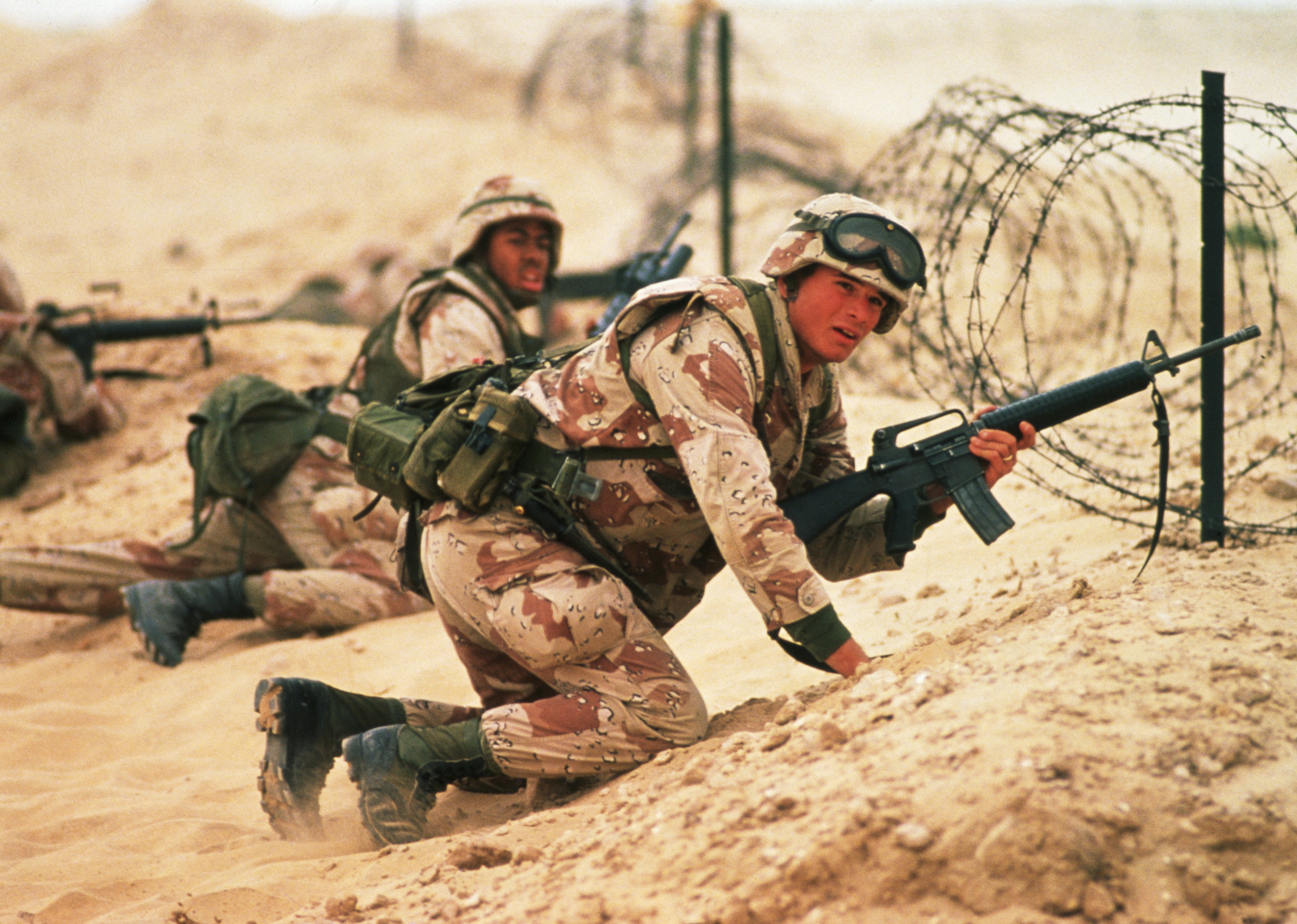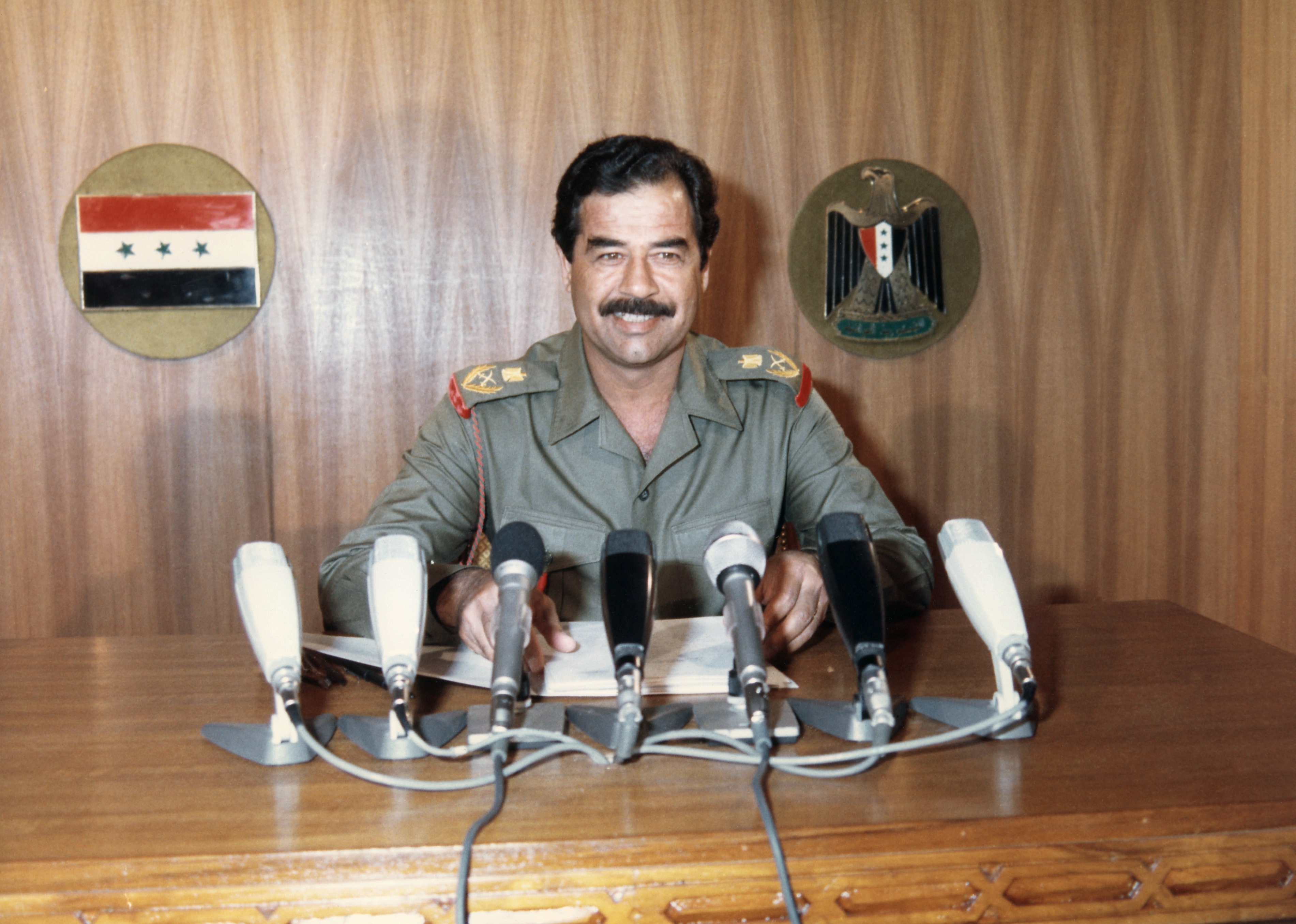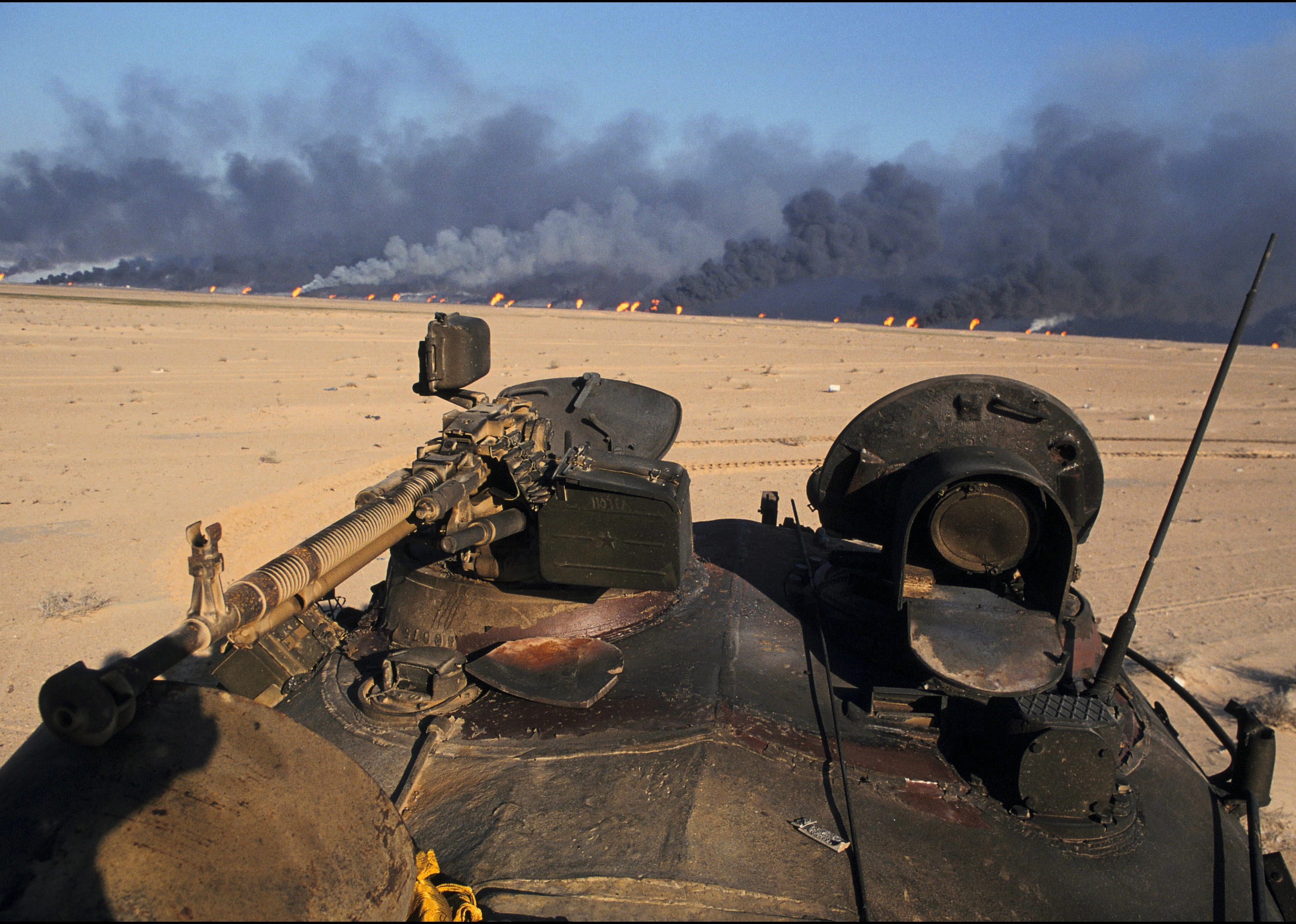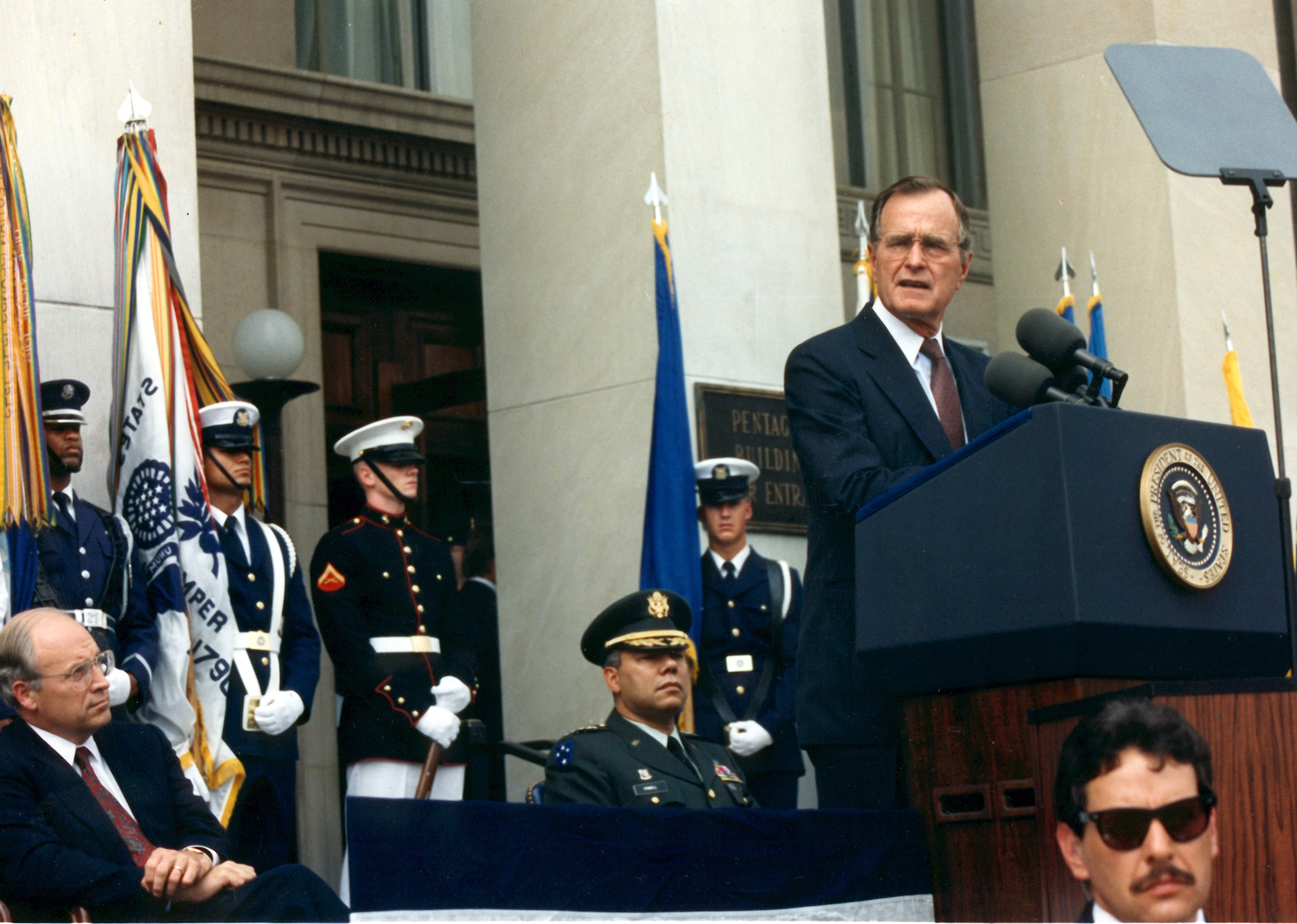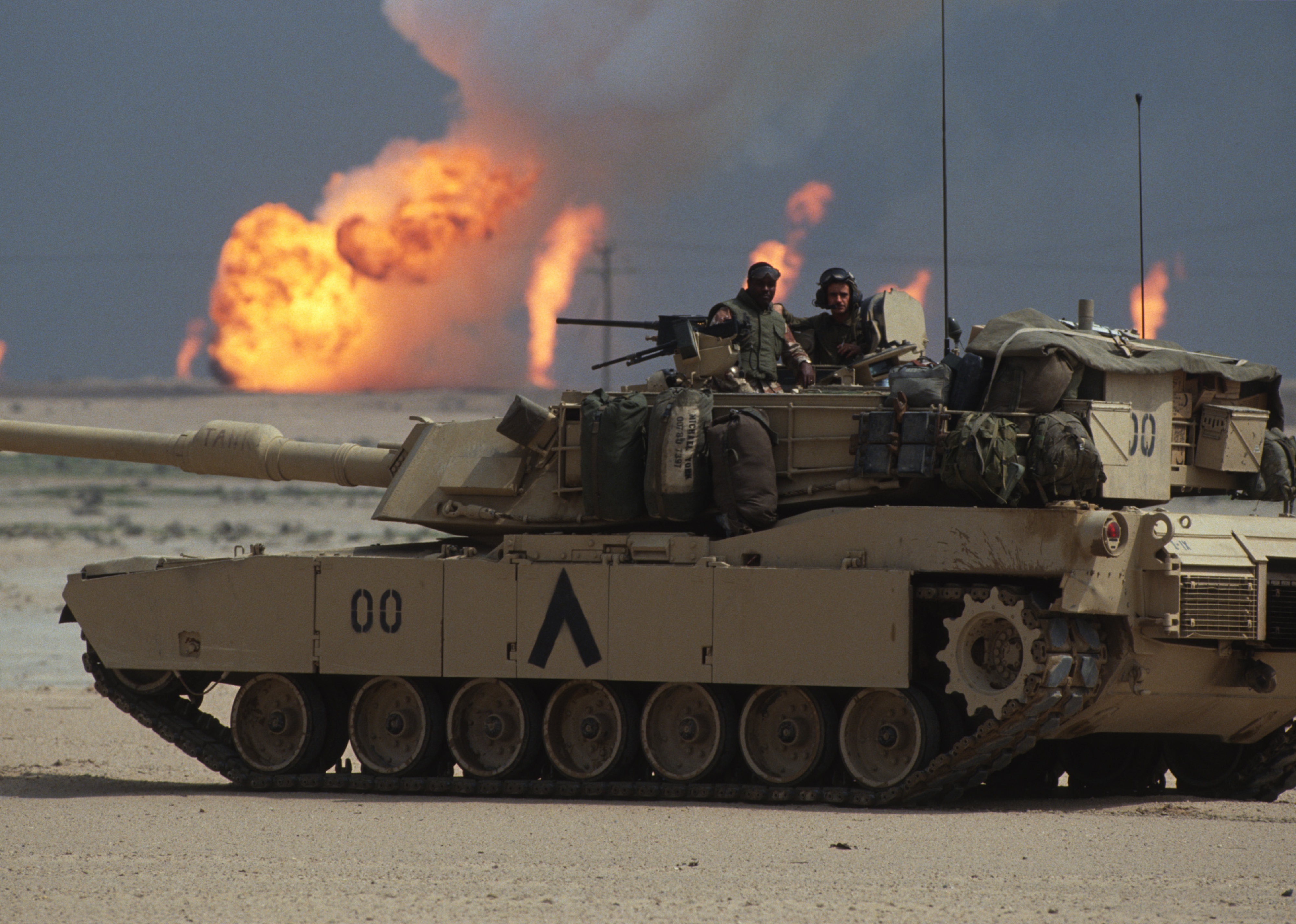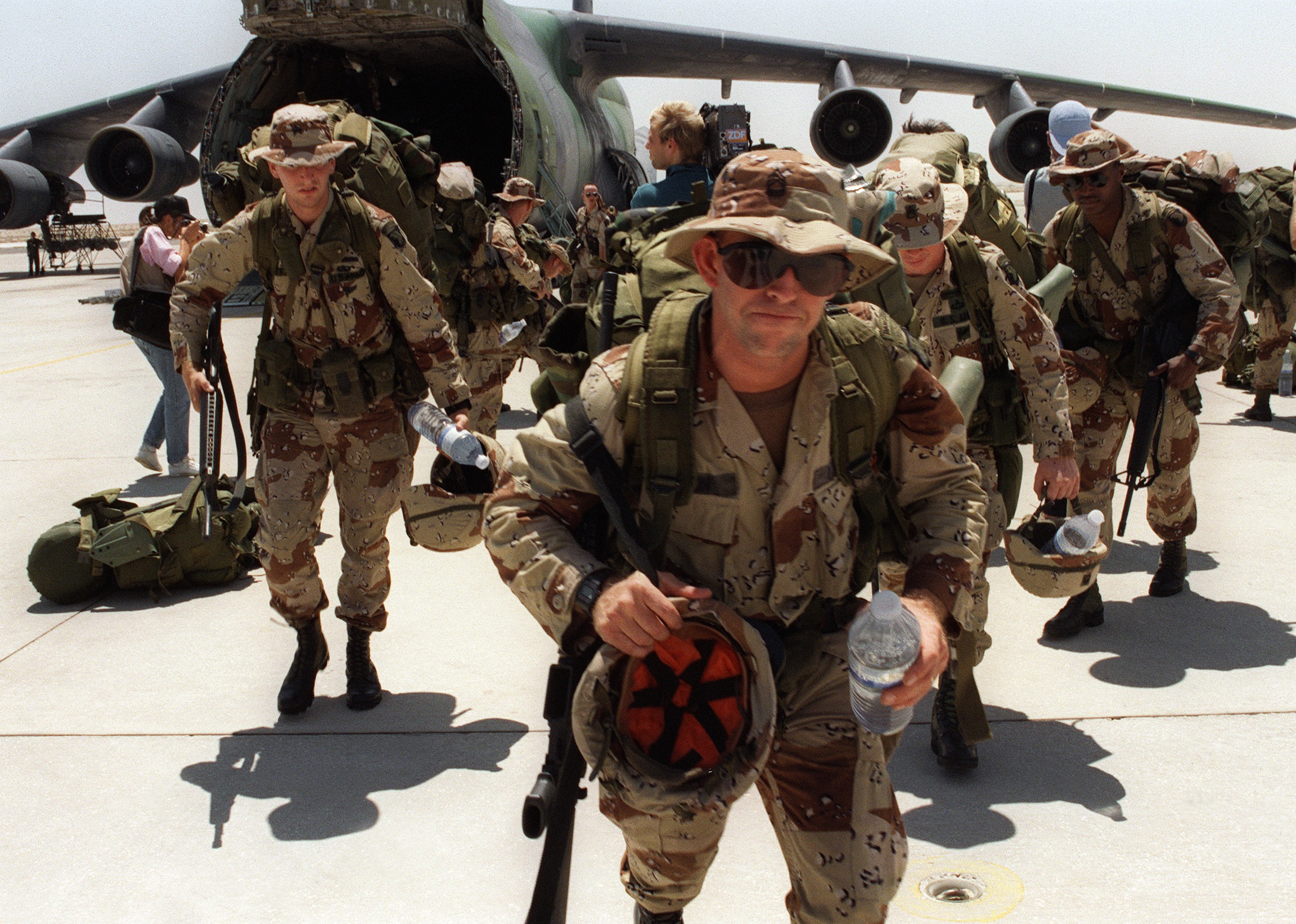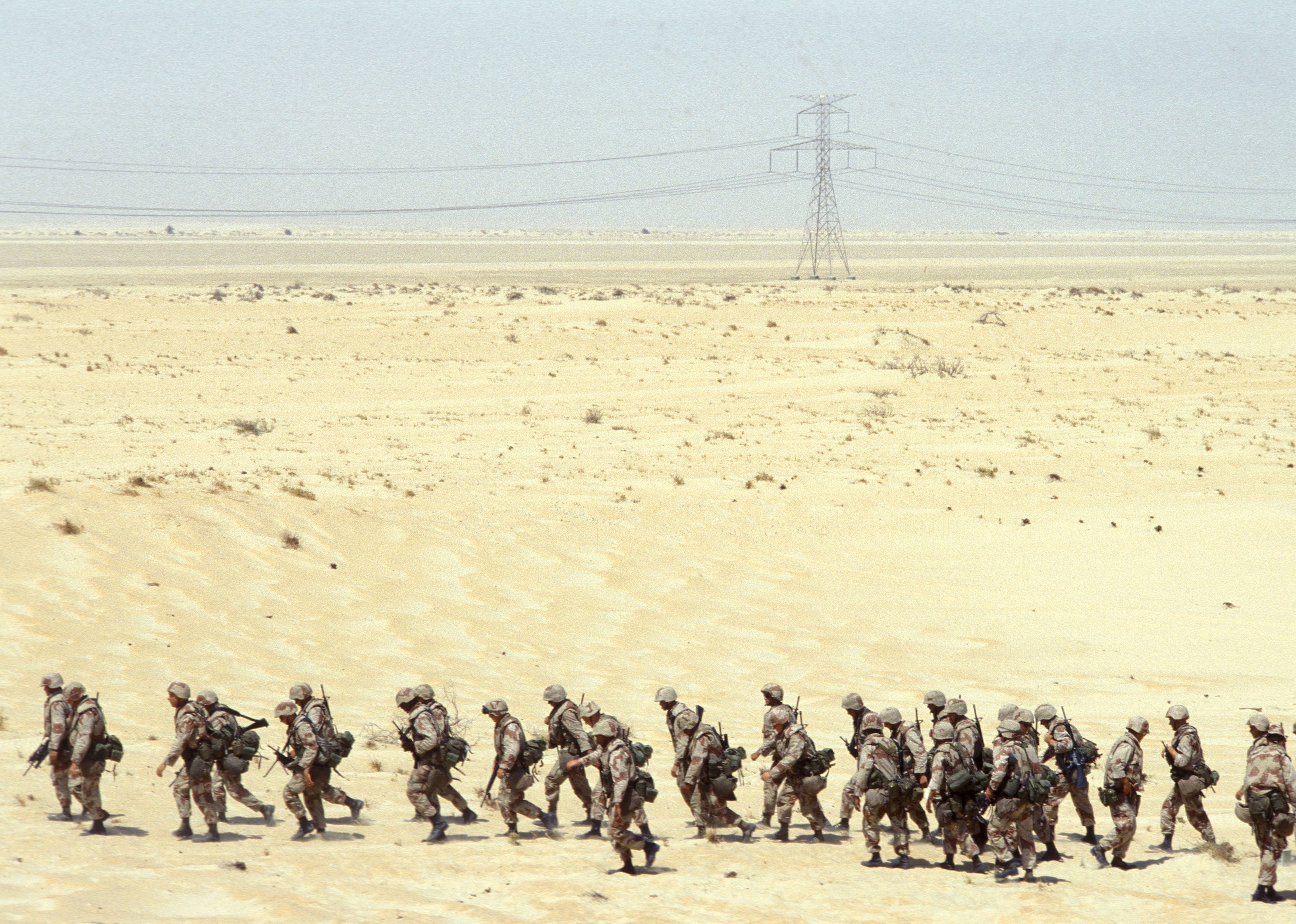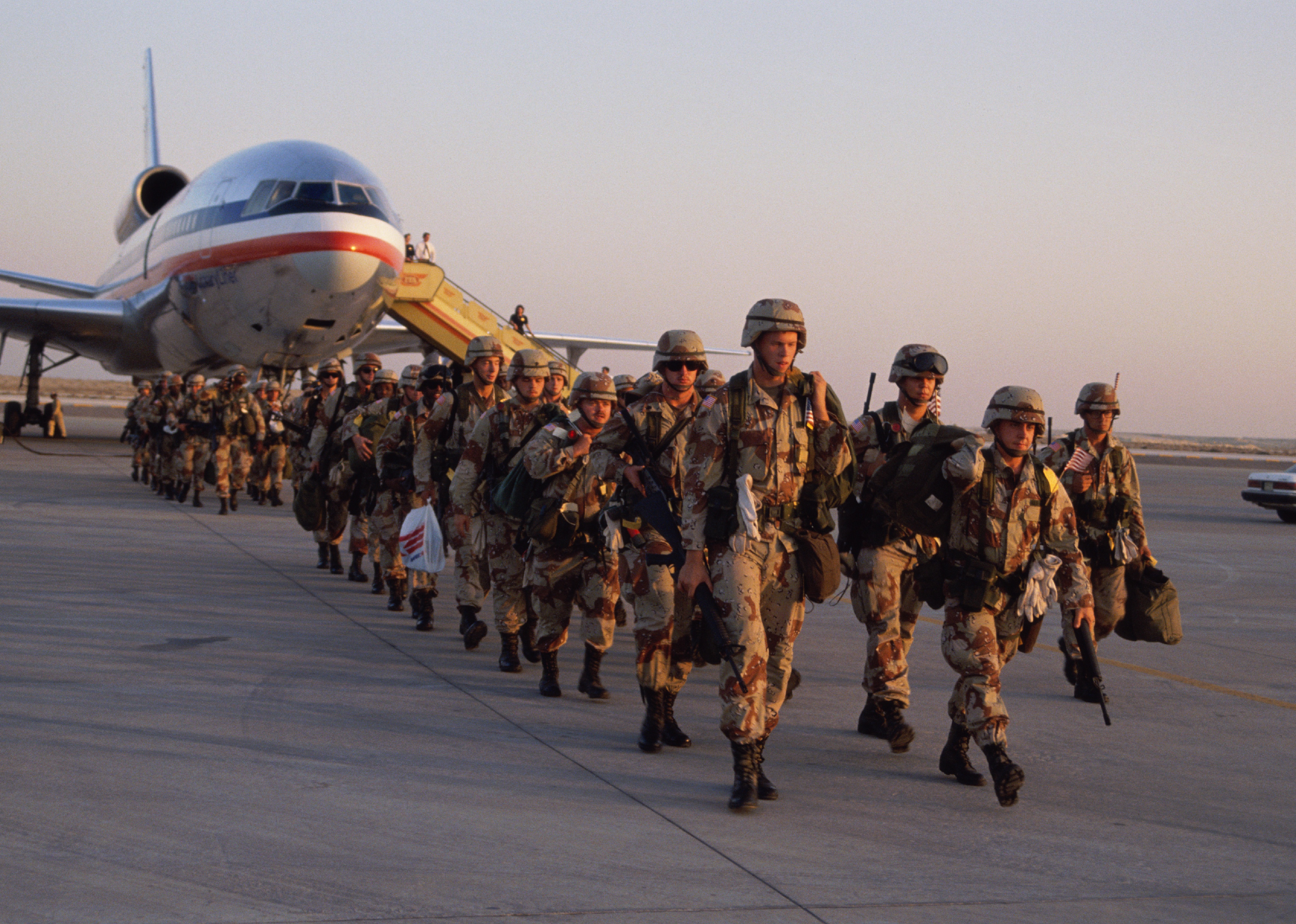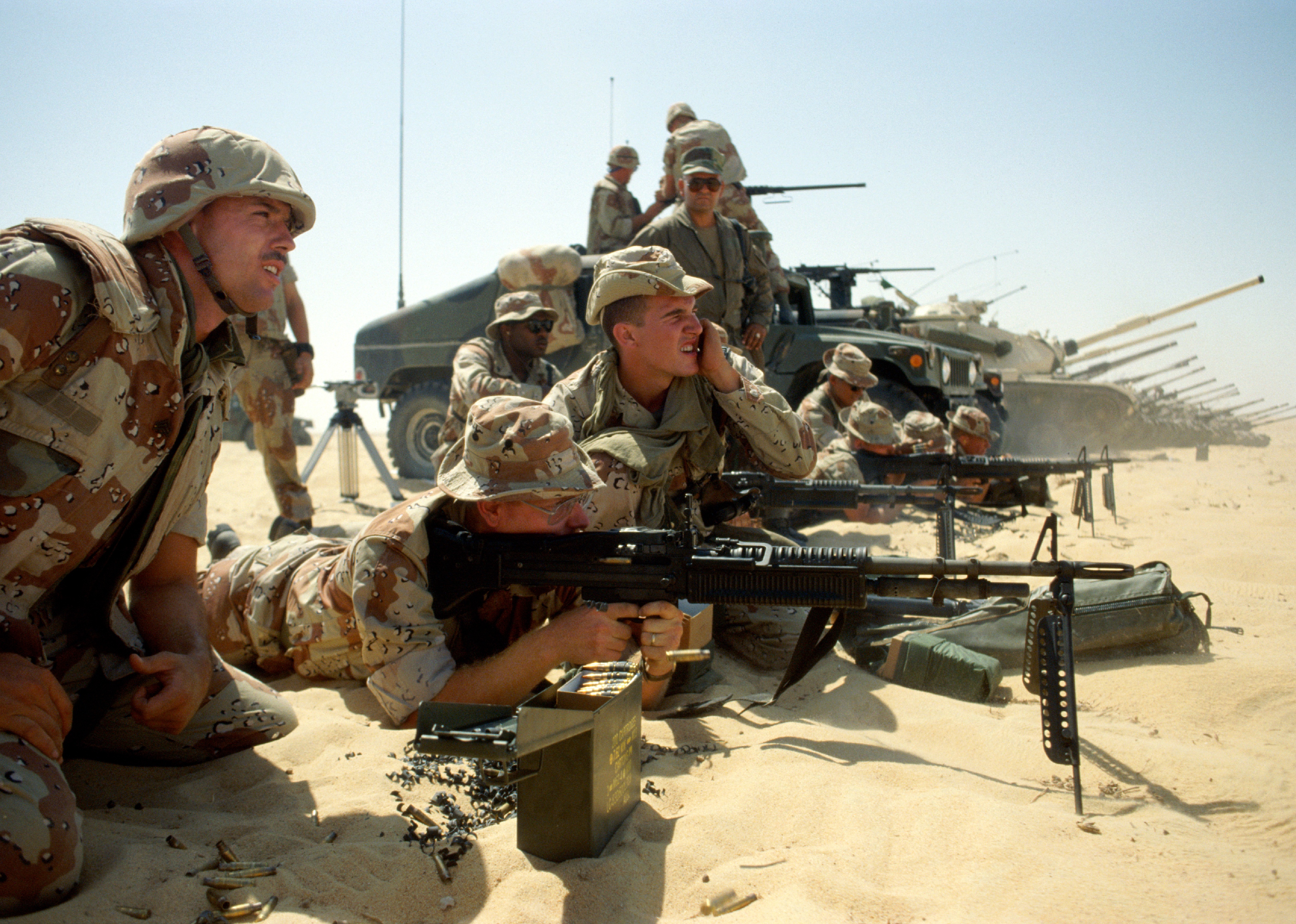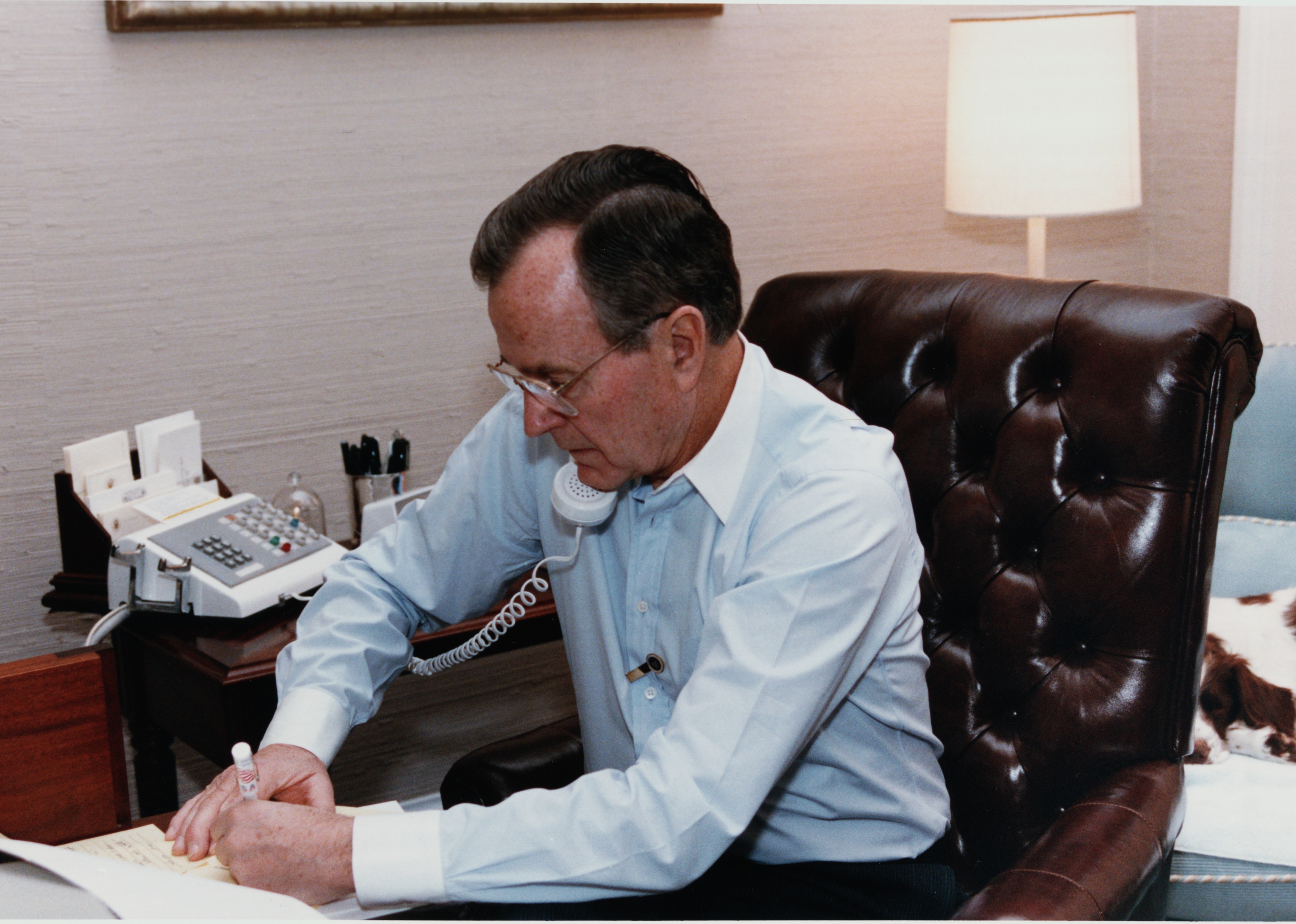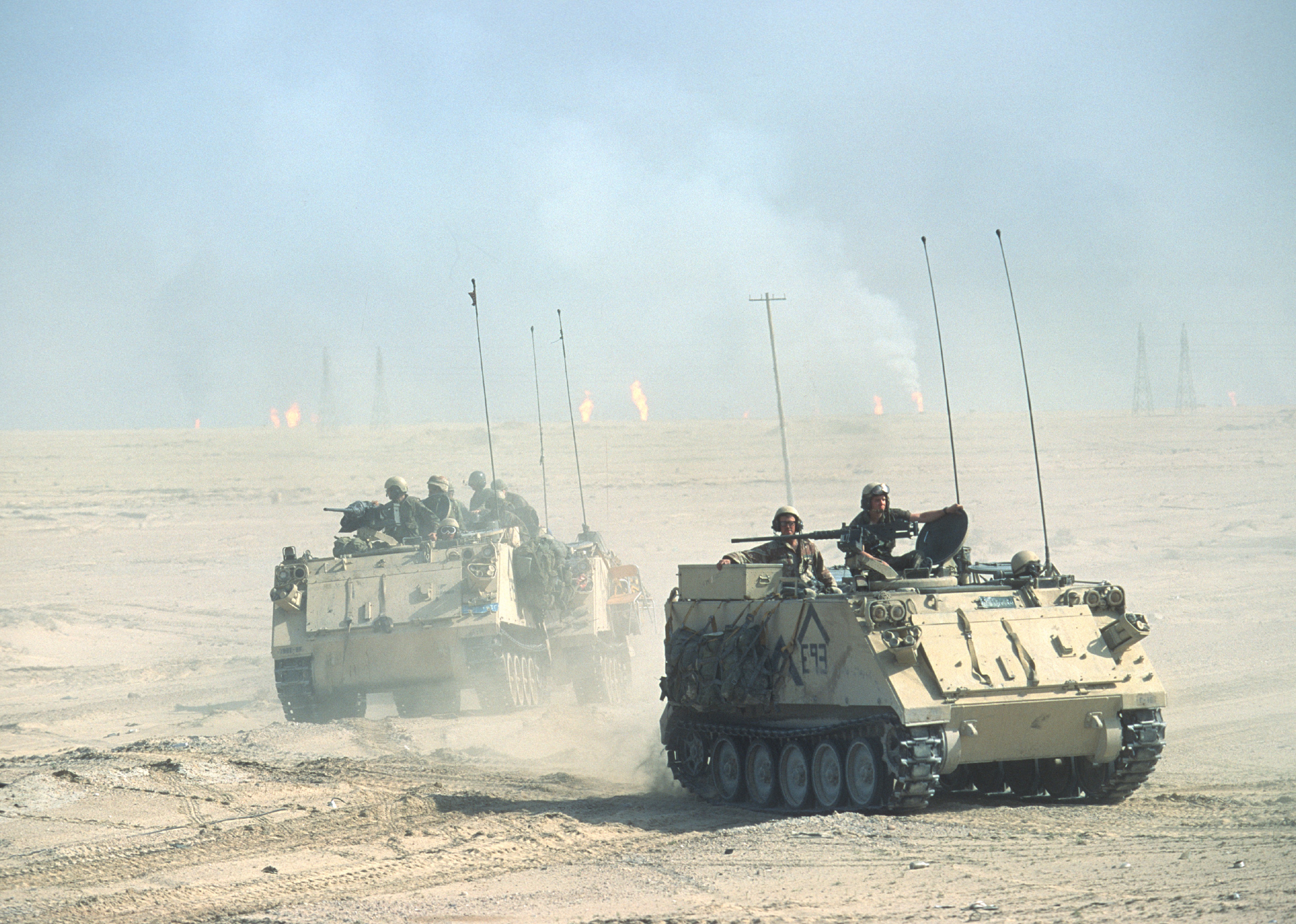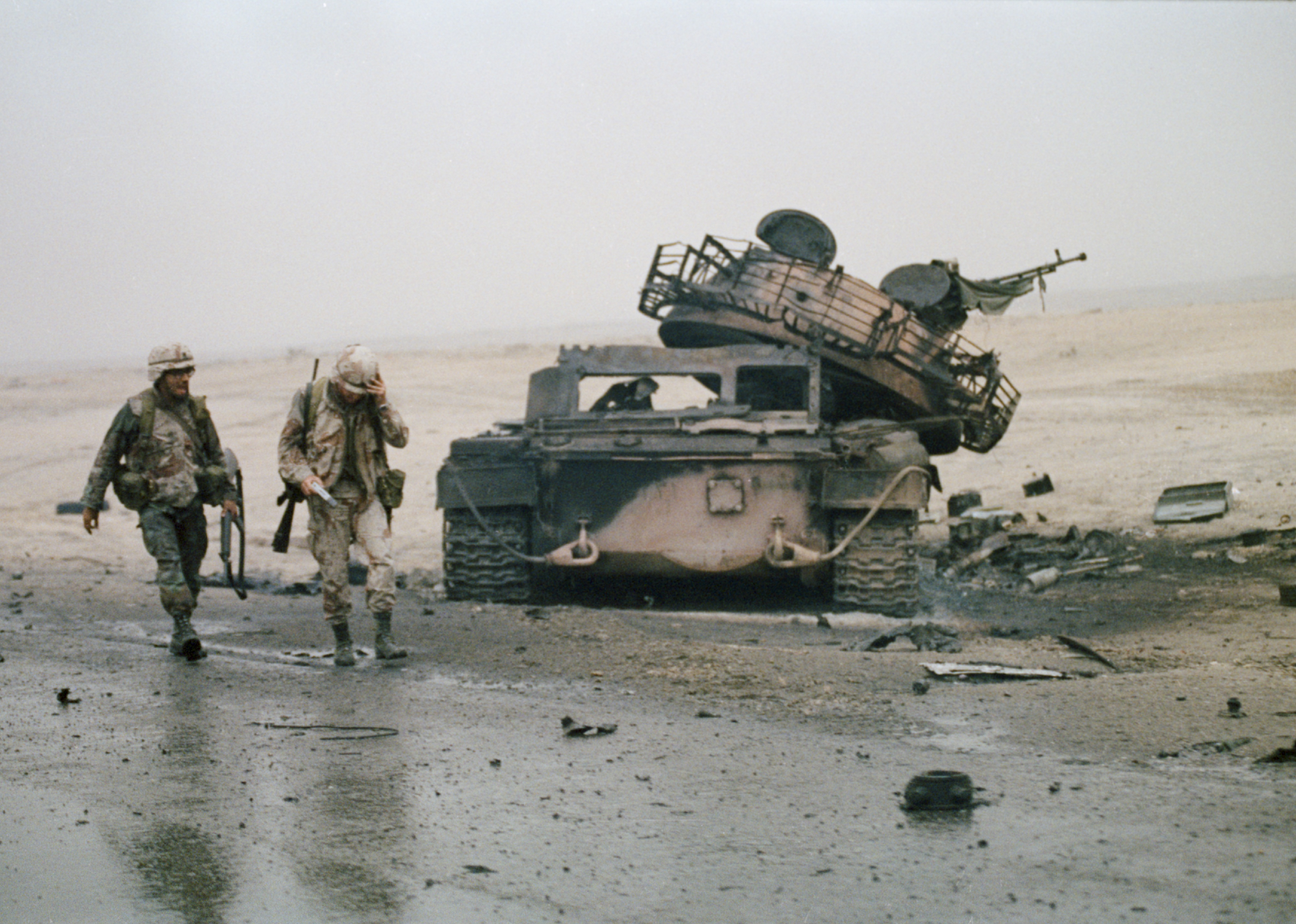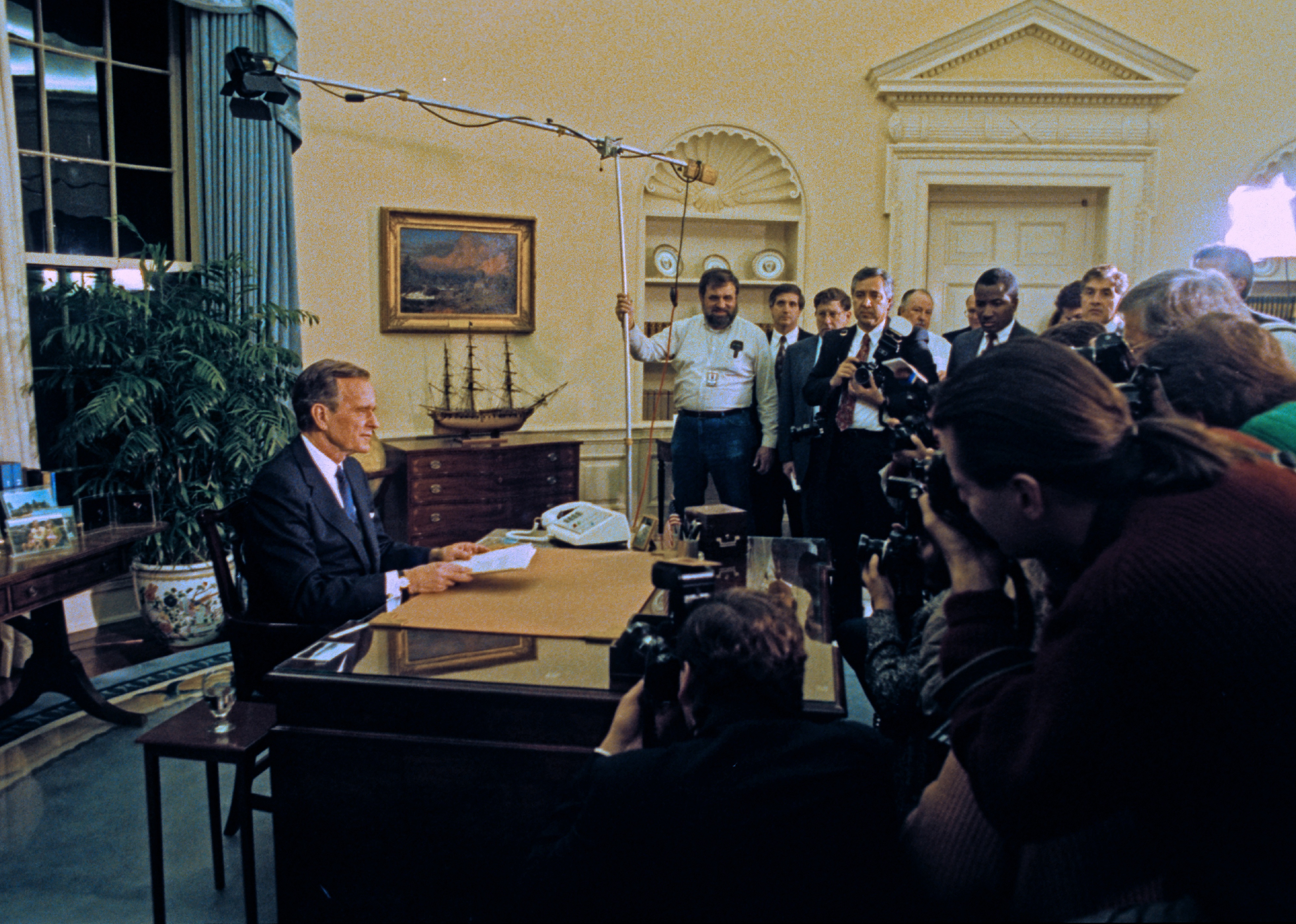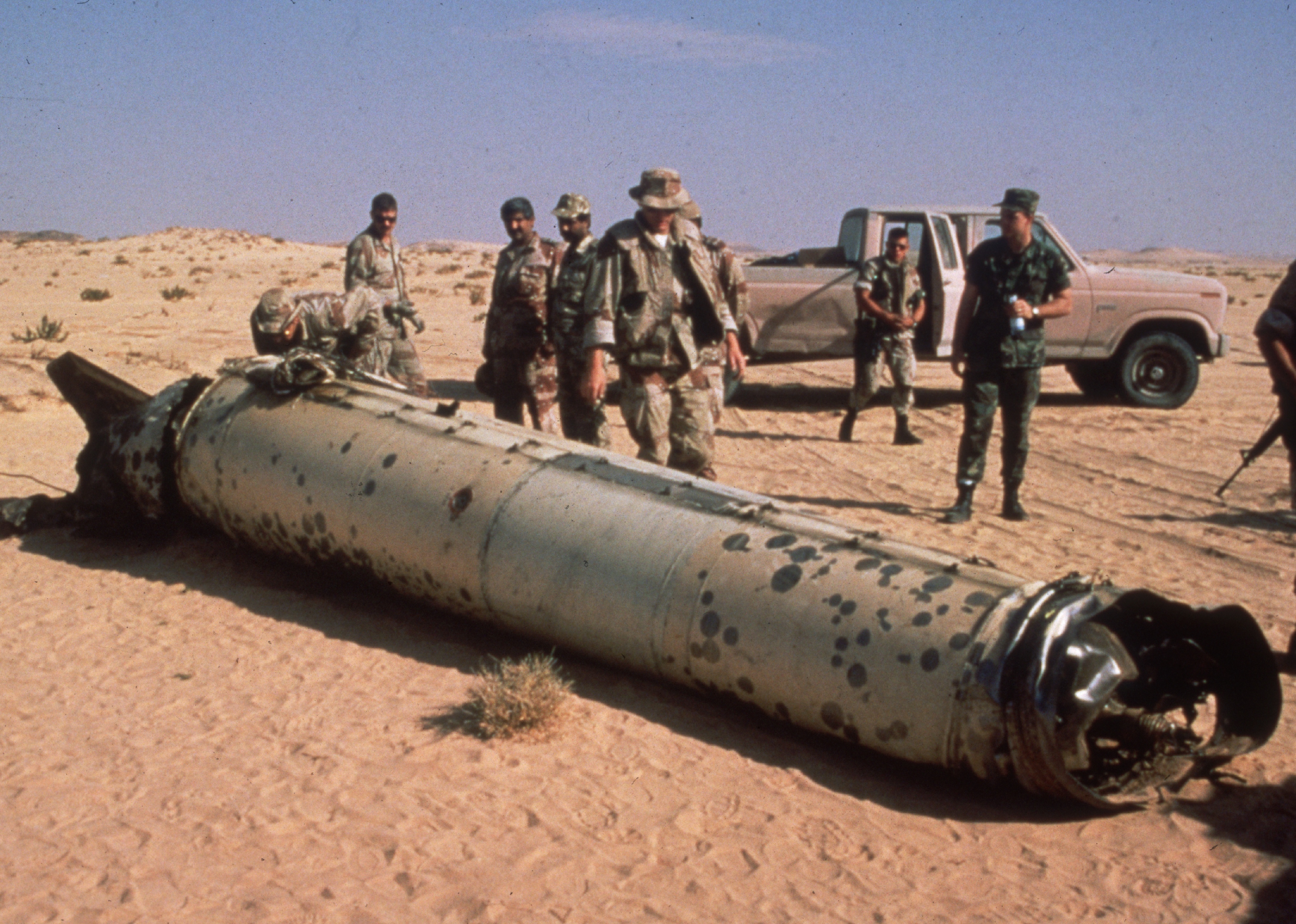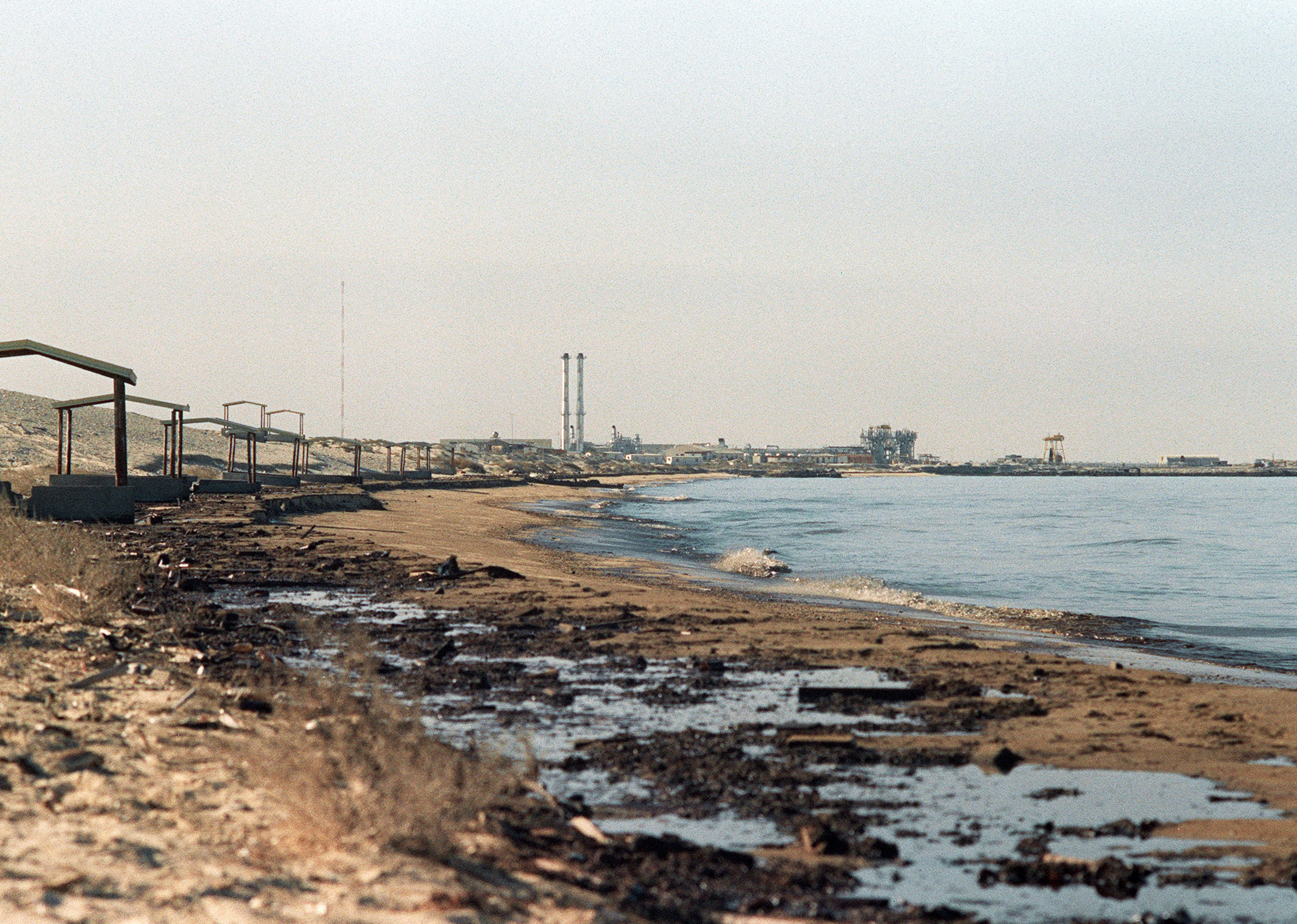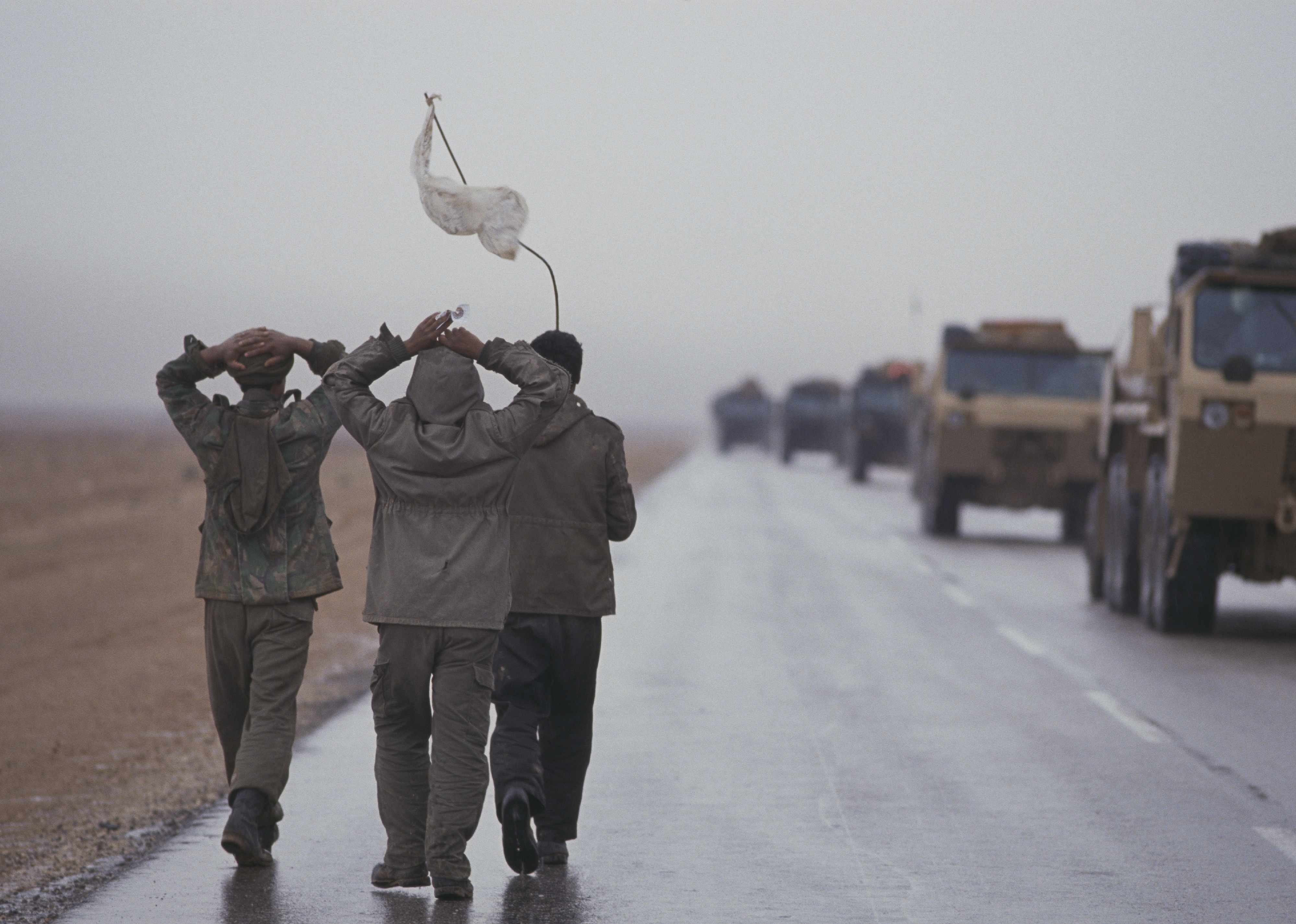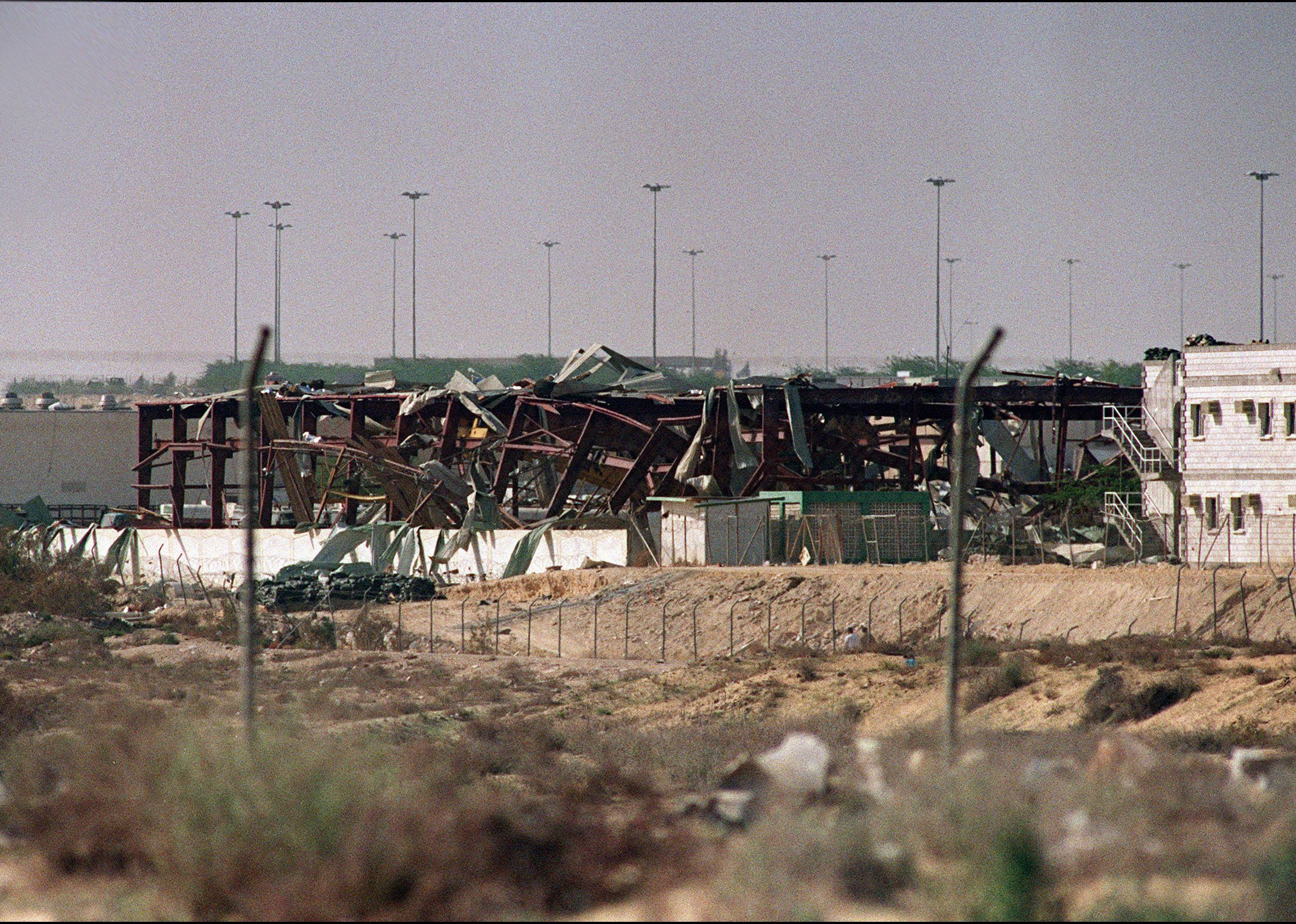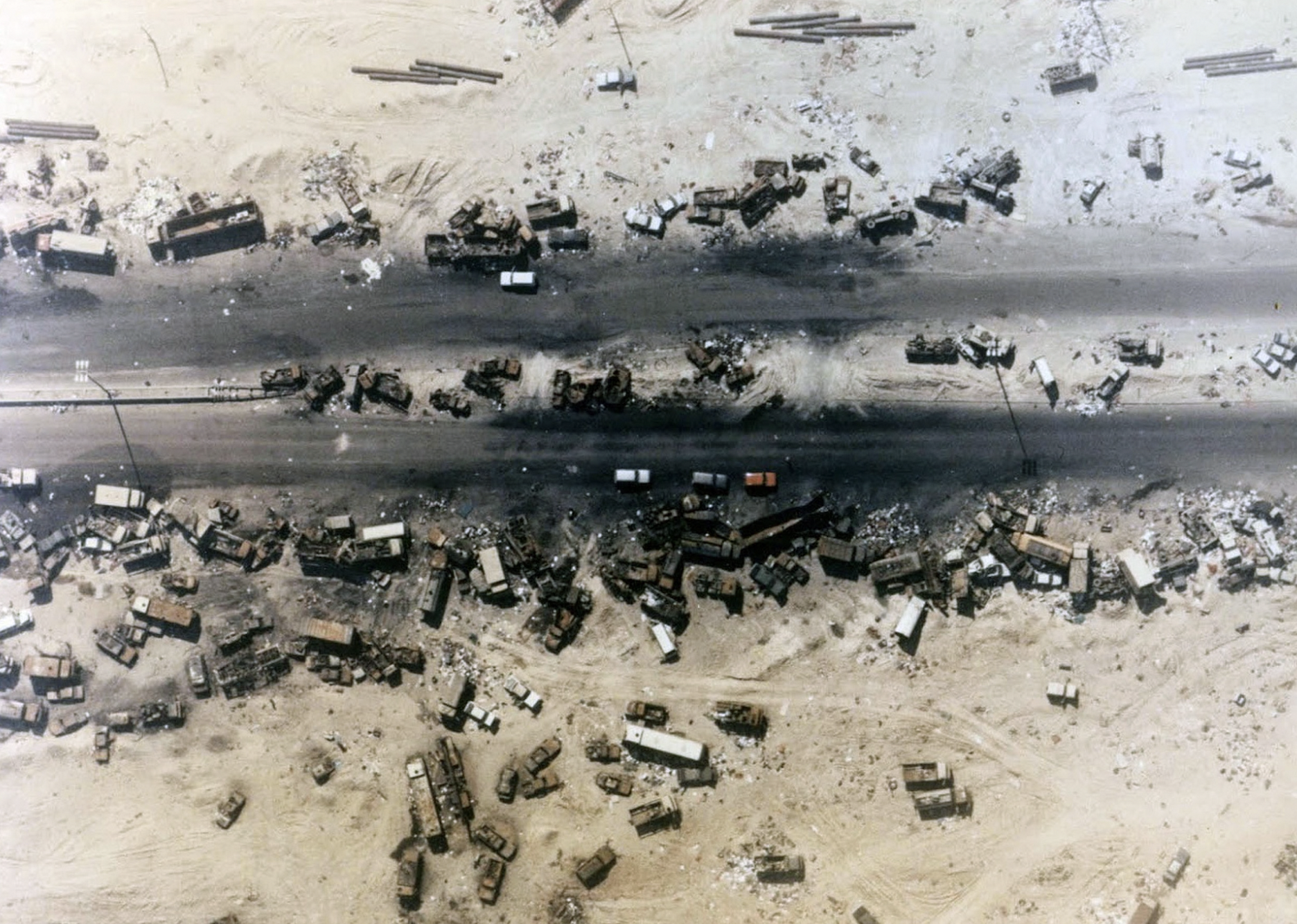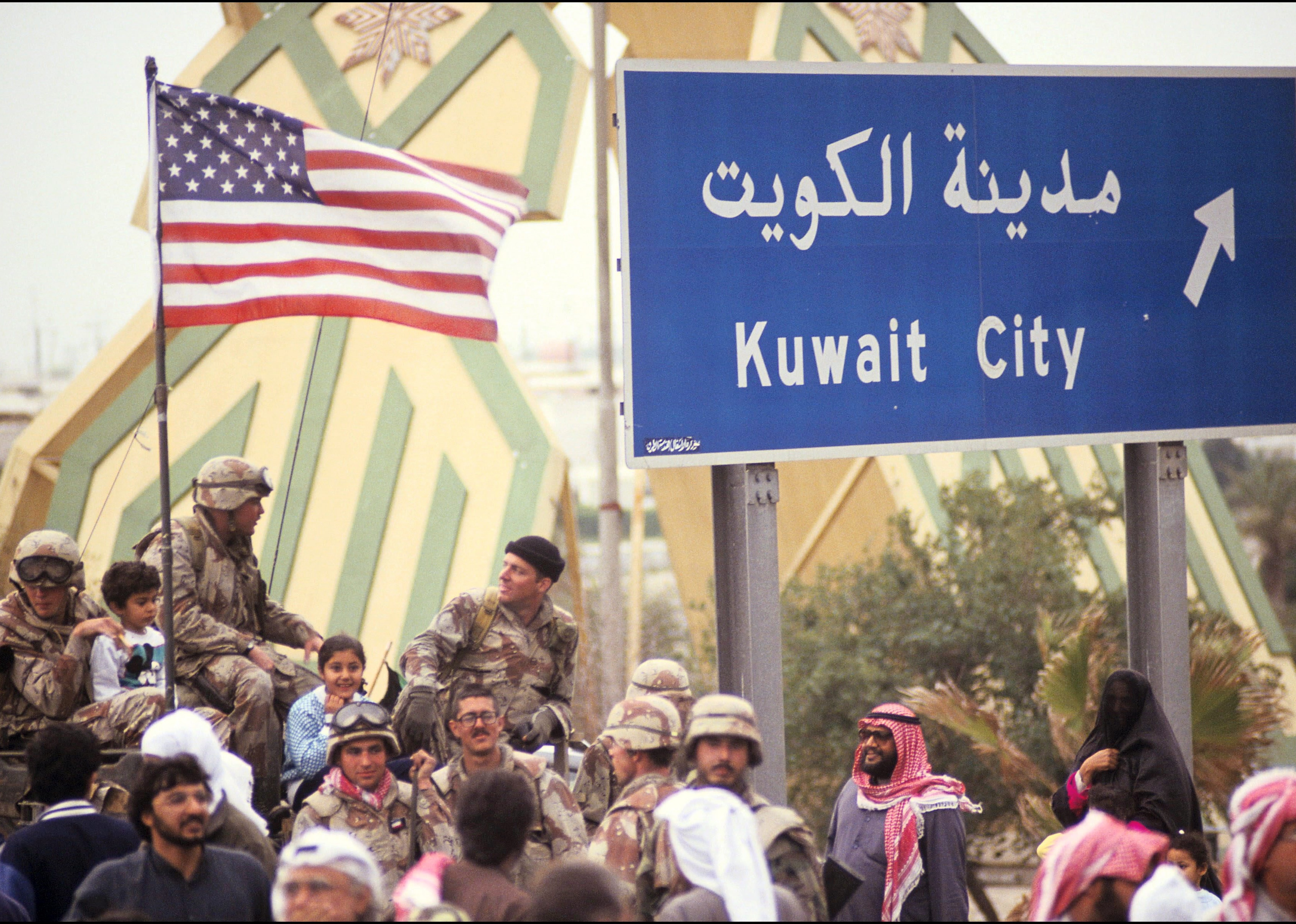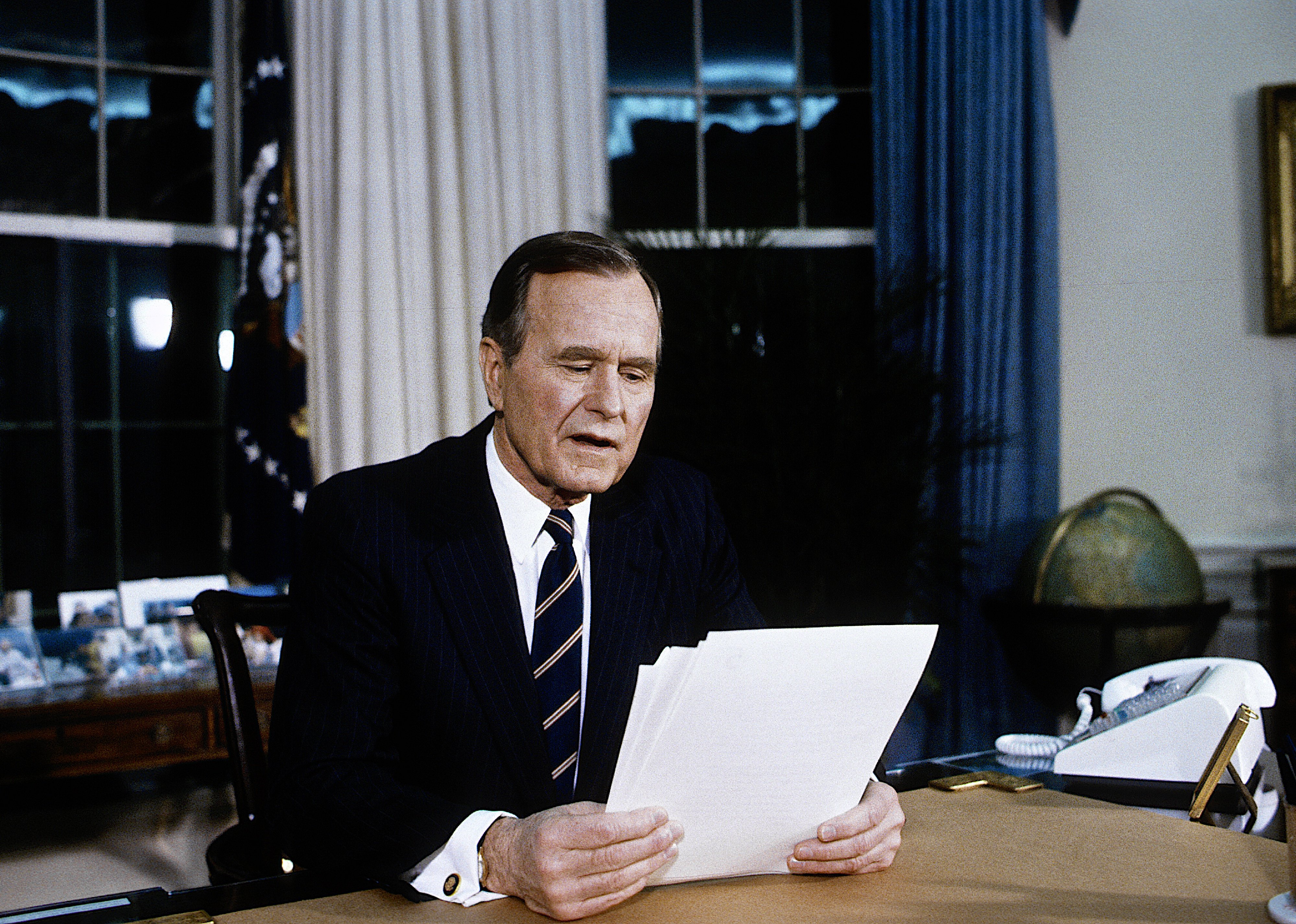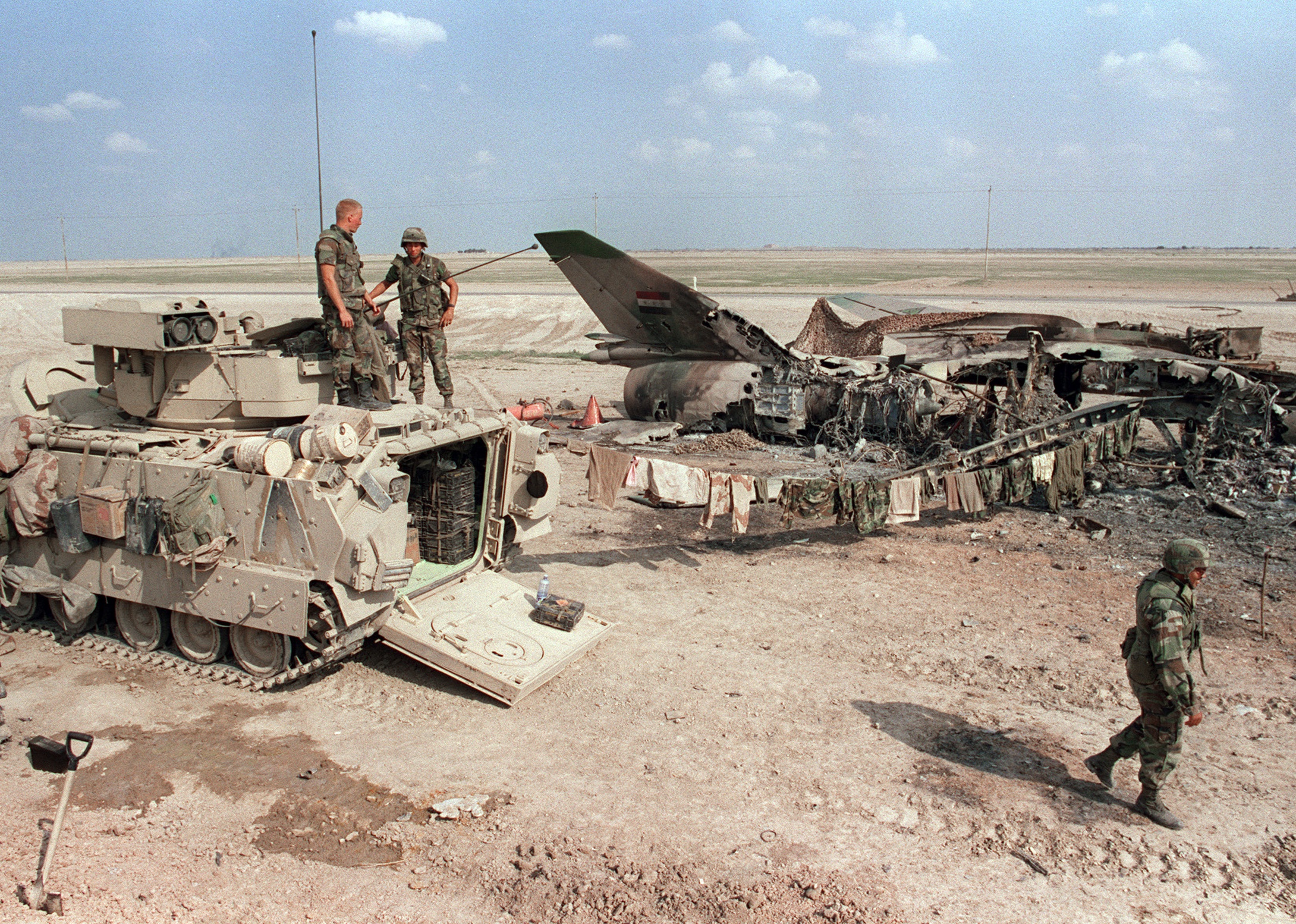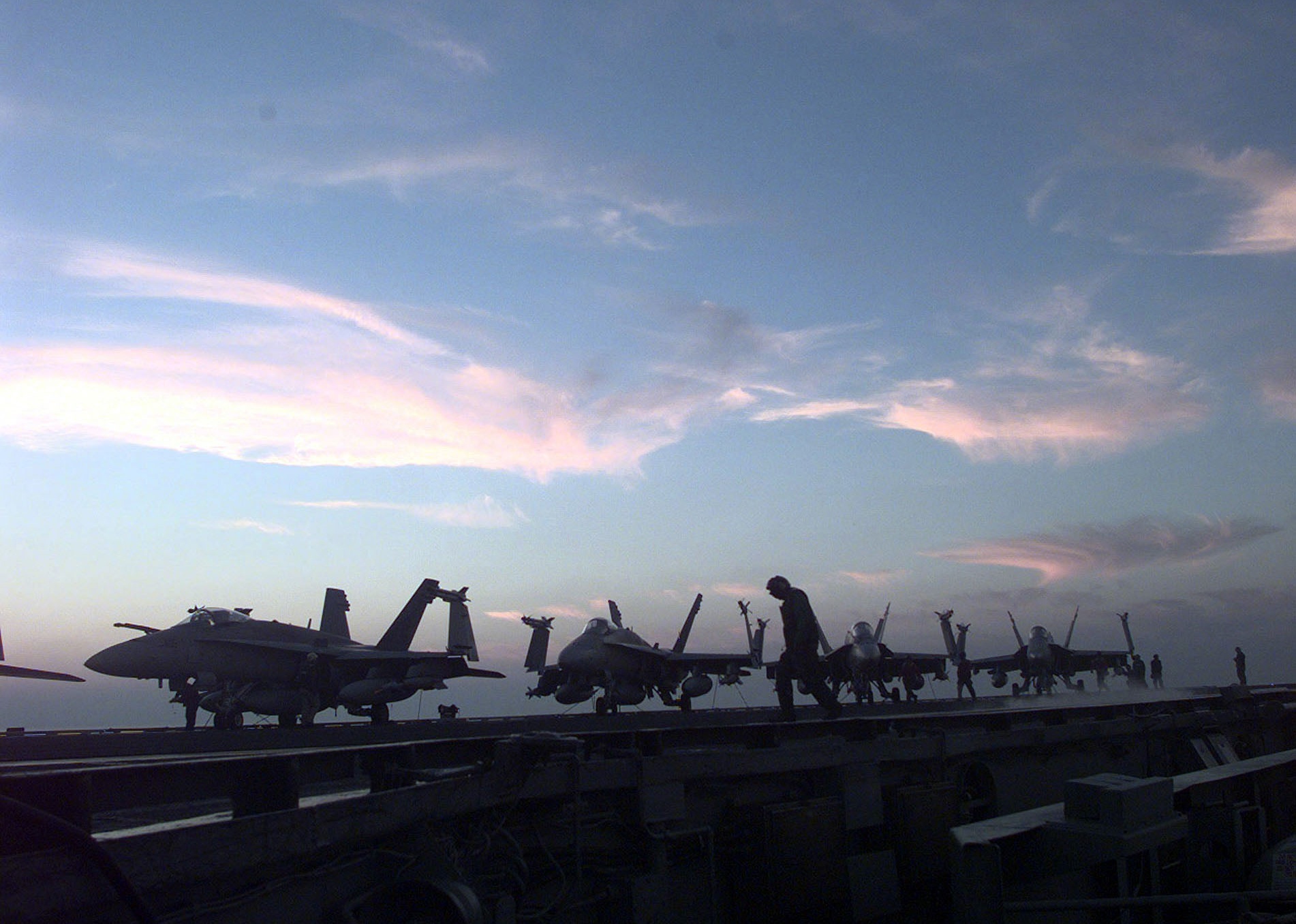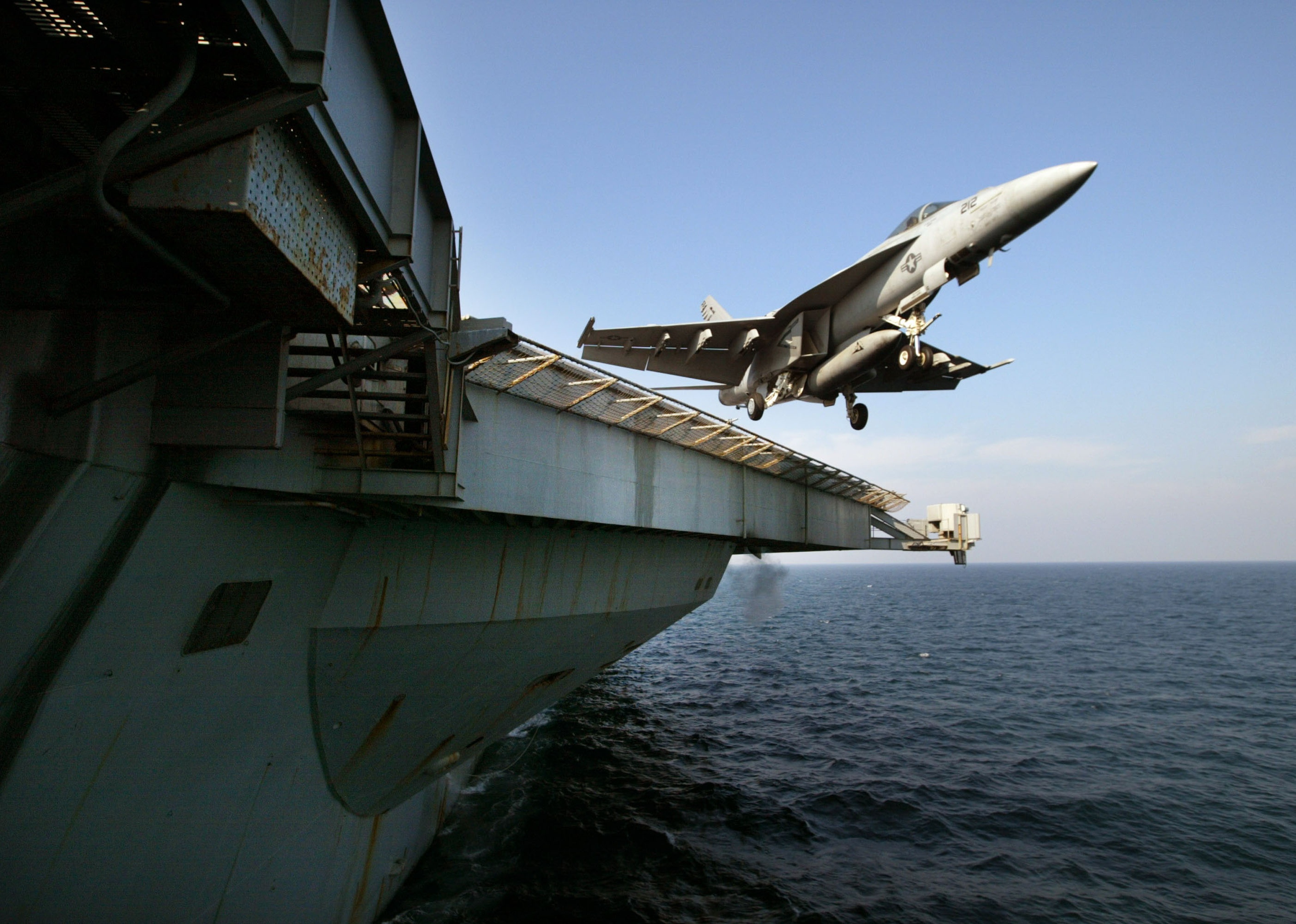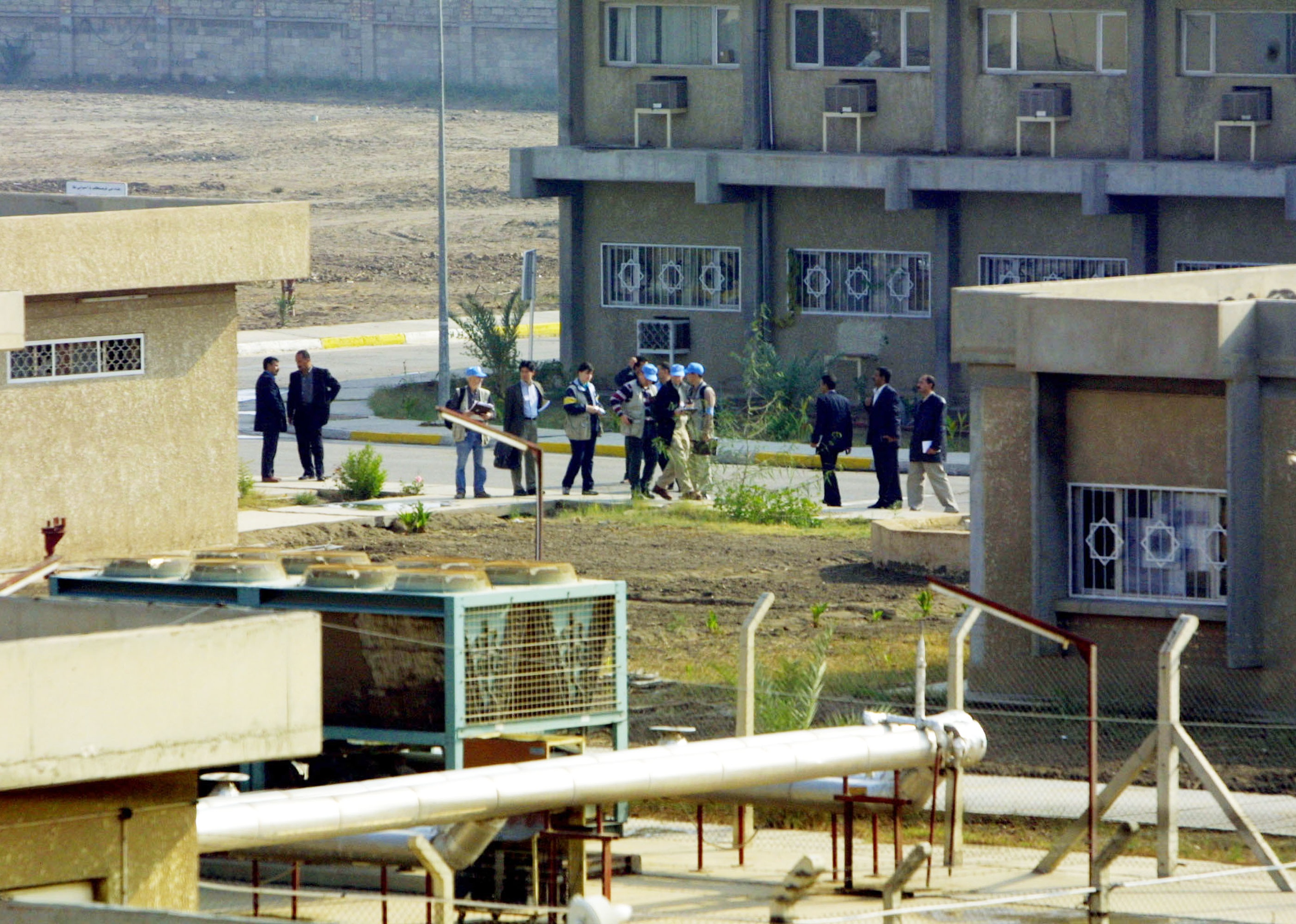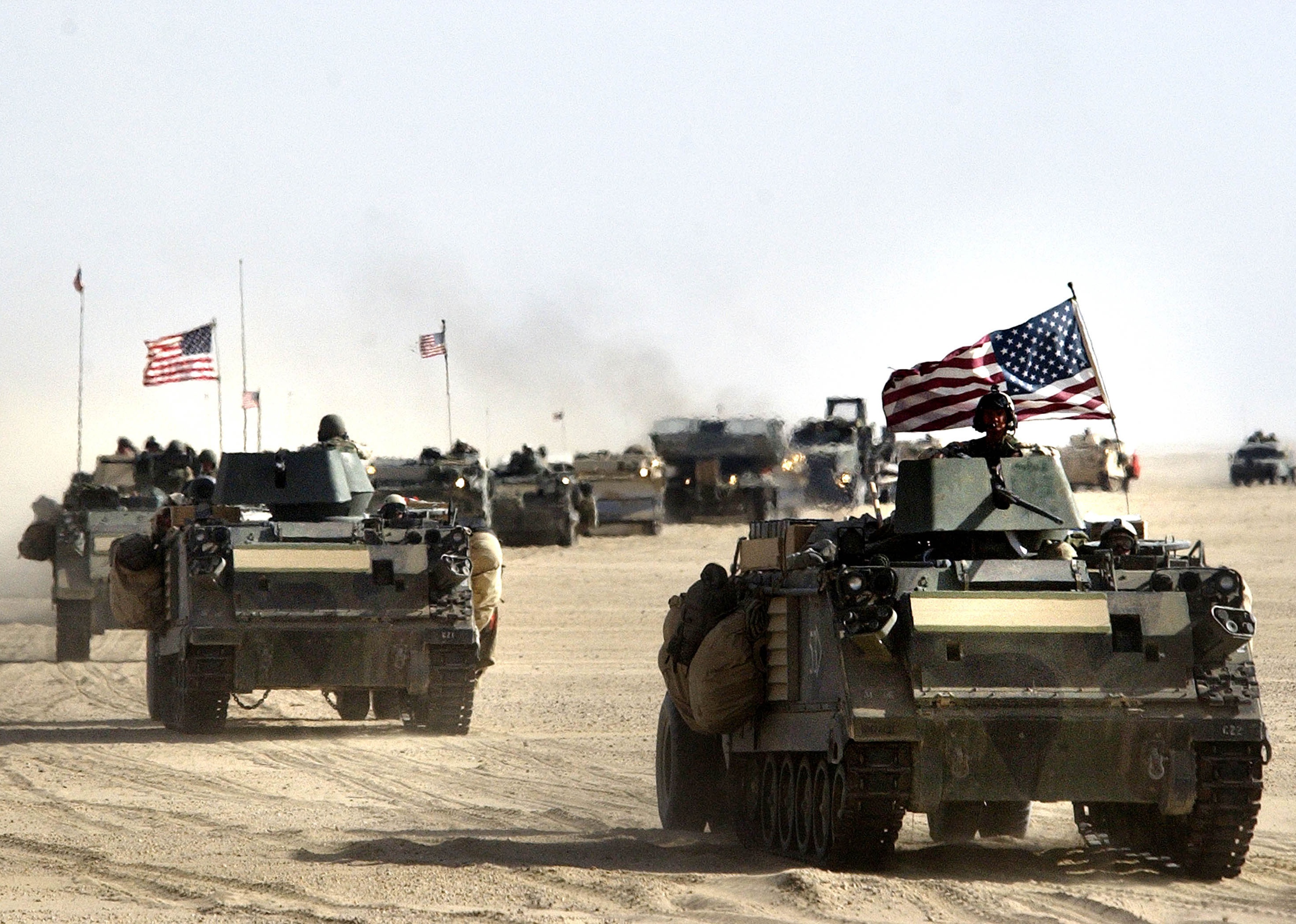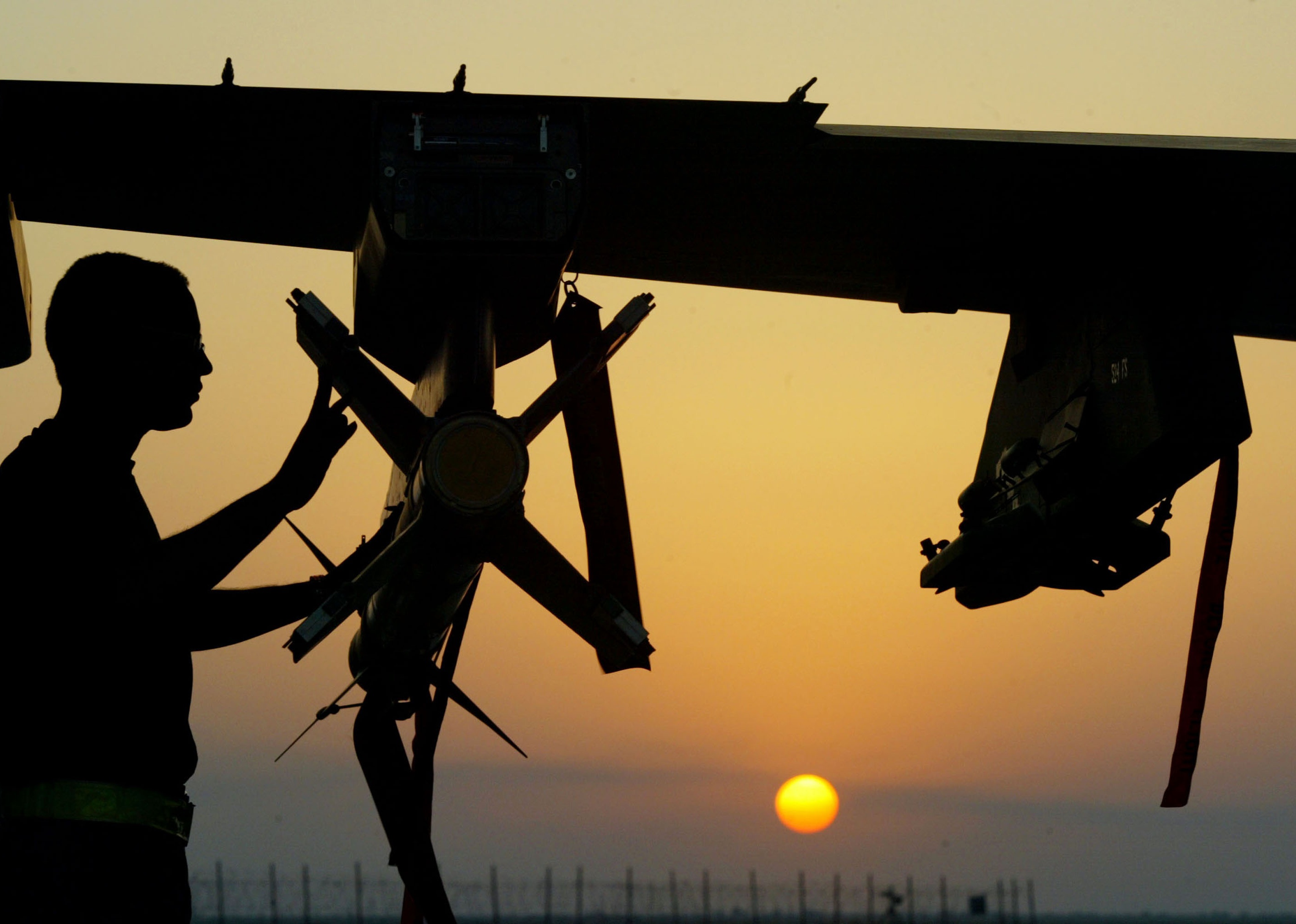A timeline of the Gulf War
Peter Turnley // Getty Images
A timeline of the Gulf War
US Marines crouch behind a barrier of barbed wire.
The Gulf War—also called the Persian Gulf War—was a crisis that affected the world for years after it ended. The Gulf War was one of the shortest wars that the U.S. has engaged in, dating from August 1990 to February 1991. Initiated by Iraqi President Saddam Hussein, the Gulf War was the first crucial international conflict the U.S. faced after the Cold War. The crisis stemmed from a growing tension between two countries—Iraq and Kuwait.
Following the end of the Iran-Iraq war in 1988, Iraq had accumulated an enormous amount of debt, including to Kuwait, which it owed several billion dollars. Saddam Hussein thought that this debt should be canceled, and considered the price of Iraq’s protection of the Arabian Peninsula against Iran. However, Kuwait and the United Arab Emirates refused to cancel the debt, leading Saddam to begin threatening attacks, which eventually turned into a full-scale war.
During the Gulf War, the U.S. deployed high-tech military equipment that had never been used before. Cruise missiles and Stealth bombers were among the new weapons used to fight the war. The Global Positioning System (GPS) was also introduced, significantly improving the military’s land navigation. It was the first time that a major U.S. military mission extensively used resources in space, leading Operation Desert Storm to be dubbed “the first space war.”
Though short in duration, the Gulf War produced lasting consequences for both the military troops involved and the world at large. Areas such as the “Highway of Death” symbolized the brutal reality of the war, with American aircraft destroying hundreds of vehicles, killing their uncounted occupants.
There are differing reports on the number of Iraqi troops who went to war and the number of those who died. Estimates of participating Iraqi soldiers in the Kuwait theatre range from 180,000 to 630,000. Death estimates range from 8,000 to 50,000 Iraqi troops killed. It is nevertheless clear that Iraq suffered many more deaths than the Allied forces did. It is reported that about 697,000 U.S. soldiers went to war, with 299 deaths.
Surviving troops suffered, too, though. After the war ended, soldiers began reporting mysterious, unexplained medical ailments. Now known as Gulf War Illness or Gulf War Syndrome, this illness includes symptoms such as fatigue, headaches, insomnia, joint pain, and other maladies. Years later, veterans continue to be plagued by these odd symptoms. Experiences of the war also haunt veterans, resulting in post-traumatic stress disorder (PTSD) for many of them.
The war took a toll on the planet as well. As Iraqi troops retreated from Kuwait, they set more than 700 oil wells on fire and left multiple pools of oil. This resulted in an environmental catastrophe. About 300 oil lakes eventually sat on the desert surface, contaminating the soil. Crude oil flowed into the Persian Gulf. Fires burned for 10 months, creating thick clouds of smoke. While the fires were eventually put out, the repercussions of the environmental crisis still remain even today.
Also, the end of the Gulf War in 1991 did not mean the end of disputes with Iraq. The U.S. continued to have conflicts with Iraq in the following years, which eventually led to the beginning of the Iraq War in 2003.
Using multiple sources, Stacker created a timeline of the Gulf War. Keep reading to learn more history about this brief but important war.
![]()
Jacques Pavlovsky // Getty Images
July 1990: Iraqi President Saddam Hussein accuses and threatens Kuwait
Saddam Hussein gives a report at a press conference,
Along with his debt-cancellation demands, Saddam Hussein accused Kuwait and the United Arab Emirates of surpassing the maximum oil export levels set by the Organization of Petroleum Exporting Countries (OPEC). He also accused Kuwait—a major oil producer—of stealing oil from the Rumaila oil field, which is located on the Iraq-Kuwait border. With Saddam threatening military action, Egyptian President Hosni Mubarak arranged negotiations between the two countries—but the meetings fell apart.
Pool BASSIGNAC/SAUSSIER // Getty Images
Aug. 2, 1990: Iraq attacks Kuwait
Oil fields on fire on the road from Kuwait City to Basrah.
During the negotiations, Iraqi troops had begun lining up on the border of Kuwait. Then, on Aug. 2, 1990, Iraqi troops infiltrated Kuwait, overtaking its capital city within hours. Though Kuwait’s smaller army was able to fight back briefly, Iraq’s robust army—the fourth-largest in the world at the time—easily seized the country.
White House via CNP // Getty Images
Aug. 5, 1990: President George H.W. Bush condemns Iraq invasion
President George HW Bush delivers a speech to Pentagon employees.
On Aug. 5, 1990, U.S. President George H.W. Bush delivered a memorable response to the crisis, rebuking Iraq’s invasion of Kuwait. Bush proclaimed, “This will not stand, this aggression against Kuwait.”
Allan Tannenbaum // Getty Images
Aug. 6, 1990: Saudi Arabia’s King Fahd asks for military assistance
American soldiers stand in the turret of a tank as oil wells burn in the distance.
On Aug. 6, 1990, King Fahd of Saudi Arabia met with U.S. Secretary of Defense Dick Cheney and requested military aid from the U.S. to protect Saudi Arabia from possible Iraqi attacks. The U.S. launched Operation Desert Shield—a military buildup that assembled troops from many nations to defend Saudi Arabia. Like Kuwait, Saudi Arabia was heavily oil-rich, and if Iraq gained control of the country, Saddam would have control of a large share of the world’s oil supply.
GERARD FOUET // Getty Images
Aug. 8, 1990: First US Air Force fighter planes arrive in Saudi Arabia
Marines disembark from a transport plane at Dhahran air base.
On Aug. 8, 1990, the U.S. Air Force arrived in Saudi Arabia as part of Operation Desert Shield. On this day, Iraq also formally annexed Kuwait. Subsequently, in late August, Saddam announced that Kuwait was Iraq’s 19th province.
Eric BOUVET/Gamma-Rapho // Getty Images
Aug. 9, 1990: UN Security Council passes Resolution 662
American troops at Dahran airport in Saudi Arabia, during Operation Desert Shield.
On Aug. 9, 1990, the U.N. Security Council issued Resolution 662. This action proclaimed that Iraq’s annexation of Kuwait was legally invalid, null, and void.
Tom Stoddart // Getty Images
October 1990: Bush increases US forces
U.S. troops arrive in Saudi Arabia to take part in Operation Desert Shield.
In October 1990, offensive plans were discussed, and war plans were presented to President Bush. Subsequently, the president decided to double U.S. forces in Saudi Arabia.
Tom Stoddart // Getty Images
Nov. 29, 1990: UN Security Council permits the use of force against Iraq
US forces carry out a live firing exercise in the Saudi desert.
On Nov. 29, 1990, the U.N. Security Council passed Resolution 678. This action authorized the use of “all necessary means” to force Iraqi troops out of Kuwait if they did not leave by Jan. 15, 1991.
Corbis // Getty Images
Jan. 9, 1991: US Secretary of State James Baker meets with Iraqi Foreign Minister Tariq Aziz
President Bush on the phone with James Baker after the Secretary’s first meeting with Tariq Aziz.
On Jan. 9, 1991, U.S. Secretary of State James Baker met with Iraqi Foreign Minister Tariq Aziz in Geneva. The conference was an attempt to settle the conflict peacefully. However, the meeting was deemed unsuccessful.
Allan Tannenbaum // Getty Images
Jan. 12, 1991: Congress permits the use of force against Iraq
American M113 Armored Personnel Carriers as they cross the desert.
As the days went on, the U.N. Security Council deadline loomed closer and closer. On Jan. 12, 1991—in concurrence with the U.N.—the U.S. Congress also approved the use of force against Iraq.
Colin Davey // Getty Images
Jan. 15, 1991: UN Security Council deadline for Iraq withdrawal passes
Troops in the Persian Gulf region during the Gulf War, circa 1991.
By Jan. 15, 1991—the U.N. Security Council deadline—Iraq still hadn’t withdrawn from Kuwait. Because the withdrawal deadline had passed, the Allied forces now had official clearance to attack Iraq—and they did.
Ron Sachs // Getty Images
Jan. 17, 1991: US Begins Operation Desert Storm
President George HW Bush sits behind his desk in the White House’s Oval Office.
On Jan. 17, 1991, Operation Desert Shield officially transitioned into Operation Desert Storm. The biggest air campaign since World War II, the coalition air offensive bombarded Iraq’s air defense system, gaining control of the skies. The mission then targeted key Iraqi buildings, such as oil refineries and communication centers—destroying these as well.
Consolidated News Pictures // Getty Images
Jan. 18, 1991: Iraq fires missiles at Israel
Allied troops stand around the remains of an Iraqi Scud missile in the desert during Operation Desert Storm.
On Jan. 18, 1991, in response to the air campaign attacks, Iraq fired Scud missiles at Israel. This was done not only as retaliation but also as an attempt to break up the international coalition, which included several Arab nations. However, due to its alliance with the United States, Israel refrained from launching a counterattack against Iraq.
CHRIS LEFKOW // Getty Images
Jan. 25, 1991: Iraq dumps crude oil into the Gulf
Oil washes up on a Persian Gulf beach near the Kuwait-Saudi border.
On Jan. 25, 1991, Iraq destroyed a Kuwaiti supertanker. Iraqi forces began to pump millions of gallons of crude oil into the Persian Gulf.
THIERRY ORBAN // Getty Images
Feb. 24, 1991: Operation Desert Sabre Begins
Iraqi prisoners of war surrendering to the United States Army’s 6th regiment.
On Feb. 24, 1991, the U.S. and Allied coalition initiated ground attacks, dubbed Operation Desert Sabre. However, by this time, more than half of the Iraqi army had already left Kuwait, and many Iraqi soldiers surrendered without resistance. Over the next four days, the Allied forces quickly overtook the Iraqi army, effectively winning the war.
NICHOLAS KAMM // Getty Images
Feb. 25, 1991: Iraq fires Scud missile, killing Americans
The U.S. Army barracks that was hit by Iraqi Scud missile debris.
On Feb. 25, 1991, Iraq fired a Scud missile, which hit U.S. barracks in Saudi Arabia. The attack killed 28 U.S. soldiers and injured dozens more.
Universal Images Group // Getty Images
Feb. 26, 1991: Highway of Death
Aerial of the Highway of Death, the result of American forces bombing retreating Iraqi forces.
On Feb. 26, 1991, Saddam announced that Iraq would withdraw from Kuwait. Large numbers of Iraqi troops tried to escape from the area on Highway 80. However, the coalition bombed the vehicles below, killing hundreds of Iraqis—giving the road the nickname “Highway of Death.”
Pool BASSIGNAC/SAUSSIER // Getty Images
Feb. 27, 1991: Allied forces enter Kuwait City
Allied forces liberate Kuwait City.
On Feb. 27, 1991, Allied forces entered Kuwait City. On this day, the U.S. forces also fought a large tank battle—the Battle of Medina Ridge.
Mark Reinstein // Getty Images
Feb. 28, 1991: Bush declares a ceasefire, ending the war
George H.W. Bush gives address to the nation from the oval office.
On Feb. 28, 1991, President Bush declared a ceasefire, officially ending the Gulf War. Because Operation Desert Sabre only lasted four days, from Feb. 24 to 28, it is famously called “the 100-hour war.” On this day, the president also announced that Kuwait was liberated.
MANOOCHER DEGHATI/ // Getty Images
March-April 1991: Iraq discusses and accepts cease-fire agreement
U.S. soldiers stand guard March 26, 1991, at the Nasiriyah air base.
In the days that followed the end of the war, Iraq accepted a ceasefire agreement. The peace terms required that Iraq recognize Kuwait’s sovereignty and that the country also rid itself of all weapons of mass destruction—chemical, nuclear, and biological. In the time period that followed, Iraqi military aircraft were banned from flying, and U.S. and British aircraft patrolled Iraqi skies.
Todd Cichonowicz // Getty Images
Dec. 16, 1998: Operation Desert Fox Begins
Sailors on the USS Enterprise prepare the flightdeck for flight operations during Operation Desert Fox.
Though the Gulf War had ended several years earlier, the U.S. continued to have tension with Iraq, especially over Iraqi cooperation with U.N. weapons inspectors. Finally, on Dec. 16, 1998, the U.S. and the U.K. launched Operation Desert Fox attacks on Iraqi military targets believed to be related to the manufacture and storage of weapons of mass destruction. The attacks hit nearly 100 targets over three days.
Joe Raedle // Getty Images
2002: US supports new UN Resolution
Pilots From USS Abraham Lincoln patrol the No Fly Zone over Iraq.
After the Operation Desert Fox bombings, the relationship between the U.S. and Iraq continued to erode further. Iraq refused to admit weapons inspectors into the country, and Iraqi forces also frequently exchanged fire with U.S. and British aircraft over the no-fly zones. By 2002, the U.S. sponsored a U.N. resolution demanding that weapons inspectors be sent back to Iraq.
Salah Malkawi // Getty Images
Nov. 8, 2002: UN Security Council Resolution passed
A U.N. inspection team conducts a search for weapons in December 2002 in Baghdad.
On Nov. 8, 2002, U.N. Security Council Resolution 1441 was passed. This action demanded that Iraq both readmit weapons inspectors back into the country and also cooperate with all prior U.N. resolutions. Weapons inspectors were subsequently readmitted in November; however, there were conflicting opinions among the U.N. Security Council member nations over how cooperative the Iraqi government was with their inspections.
Scott Nelson // Getty Images
March 17, 2003: President George W. Bush issues ultimatum to Saddam
U.S. Army 11th Engineers move into position March 18 ahead of a possible strike near the Kuwait-Iraq border.
Because of the varying opinions surrounding the weapons inspections, the U.S. and Britain began to assemble military forces on the border of Iraq. Finally, on March 17, 2003, President George W. Bush—without any new U.N. support—issued an ultimatum to Saddam Hussein. He demanded Saddam step down from power and leave Iraq within 48 hours, or there would be war.
Paula Bronstein // Getty Images
March 20, 2003: Iraq War Begins
An Air Force pilot performs a post flight inspection on an F-16 Fighting Falcon at sunset at an airbase in the Gulf.
Saddam refused to leave Iraq, and on March 20, 2003, the U.S. and allied forces proceeded to attack the country. The Iraq War had officially begun.
Story editing by Jeff Inglis. Copy editing by Robert Wickwire. Photo selection by Clarese Moller.
